Friday, 20 March 2015
Thursday, 19 March 2015
6. What have you learnt about technologies from the process of constructing this product?
My group and I have added annotations to our Thriller that has been uploaded to youtube, the annotations explain our understanding of technologies from the process of constructing the media product.
Wednesday, 18 March 2015
5. How did you attract/address your audience?
I have made a video with my group member Khalil to answer evaluation question 5 (How did you attract/address your audience?) We filmed it in our school's film studio using my canon 7D mark II and it was edited by me on my laptop using adobe premiere pro.
Here are the notes we used to create our video, this is not an exact script but more of a rough guideline as to how to answer the question.
What pleasures can your target audience gain from the opening sequence?
establishing shot of the drone is very scenic and epic
engaging scope shots
plot shots
the revealing of the rifle
scenic woodland shots
attractive actress
building of the sound, a crescendo
killing of the man
quick cutting makes sequence more exciting near the end
all creates tension mystery and suspense
what type of film is it, sub genre? which other films might be influential?
Crime Thriller (sub genre)
american sniper (Action Thriller)
Bourne films (Crime Thriller)
jack reacher (Action Thrilller)
taken (Thriller)
Jarhead (Action Thriller)
shooter (Action Thriller)
Setting - why does this appeal to your target audience and why?
woods are relatable to a lot of people in england, surrey hills
big country manor house
“Our thriller is based in the surrey hills, the woodland is a familiar setting for a lot of people in england as there is a large amount of woodland and farmland. The environment is scenic and the large manor house would appeal to our target audience as we assume that the age range of 19 to 24 year olds would want a large manor house.”
Narrative in the opening sequence:
The story
man killing man
protector figure
ex military protagonist possibly
set in England
2. Characters
who is the girl?
who is the sniper?
who was the dead guy?
whats the relationship between the two characters
3. Narrative devices
plot twist surprises the audience and makes them unable to guess what happens later on
linear narrative with a singular plot twist to build tension
Which social groups are we appealing to and how?
- young males of 19 - 24
we have chosen a young attractive actress
used a sniper rifle to appeal men due to action conventions
used POV shot to relate to first person video games that young male audience would relate to
Music
tense music
manipulated and split the music to make the sound more distorted and unnatural and to create a build of tension
eery and creepy
loud rumbling noises create an epic atmosphere
Titles, director/stars names/institutional logos
what information did you give and why?
used actors like mike niland however if we had the budget we would have casted bradley cooper
we used simp but we would have used felicity jones
we would have used a professional stuntman to perform the death of the second runner
Quentin Tarantino as the director
I would have chosen Bold as the institution to make the film
Editing/ film styles, what editing techniques did we use?
lots of cross cutting between the two character s to create tension
increased the speed of the durations of shots as the sequence progressed to build the pace and increase the tension again
used a scope to create a POV shot from the sniper
Idilic scenery created through colour correction
the pace increases
Codes and conventions, what conventions have we used? how have we used them? Have you challenged any of these conventions?
quick cuts
suspense
fear
tension
fast pace
eery music
- used quicker cuts towards the end of the sequence to build the pace
used suspense when revealing the sniper and his mysterious case, the audience doesn’t know whats in the case
create tension by making the audience think that the sniper is going to kill the girl
Tuesday, 17 March 2015
4. Who would be the audience for your media product?
 To represent my target audience I have created a fake facebook profile, I have "liked" certain films and posted about others that would be on the agenda of our target audience. I have also posted as him saying things that would again stress the age group we are aiming for our thriller to appeal to and also things that regard to the type of films he is interested in. I have made the age of the fake facebook profile 19 years old, as this will be the average age of our target audience. I have researched what ages are attracted to action styled crime thrillers and 19 year olds seem to be the biggest market for these films.
To represent my target audience I have created a fake facebook profile, I have "liked" certain films and posted about others that would be on the agenda of our target audience. I have also posted as him saying things that would again stress the age group we are aiming for our thriller to appeal to and also things that regard to the type of films he is interested in. I have made the age of the fake facebook profile 19 years old, as this will be the average age of our target audience. I have researched what ages are attracted to action styled crime thrillers and 19 year olds seem to be the biggest market for these films.I made a post about the current hit film "American Sniper" as my group had gained inspiration from the sniper scoped scenes and also the camera work around the sniper himself, Sniping is a big part of our opening sequence as well so it is quite important that our target audience is interested in sniping.
Admittedly I have most likely over exaggerated the enthusiasm for crime thrillers that our target audience will have, but in these two posts I have demonstrated that our target audience is interested in the styes of pulp fiction and breaking bad, both crime thrillers, and both shot in quite a stylised way. My group has looked at the directing styles of both Vince Gilligan and Quentin Tarantino, so it would make sense for our target audience to be a fan of their styles.
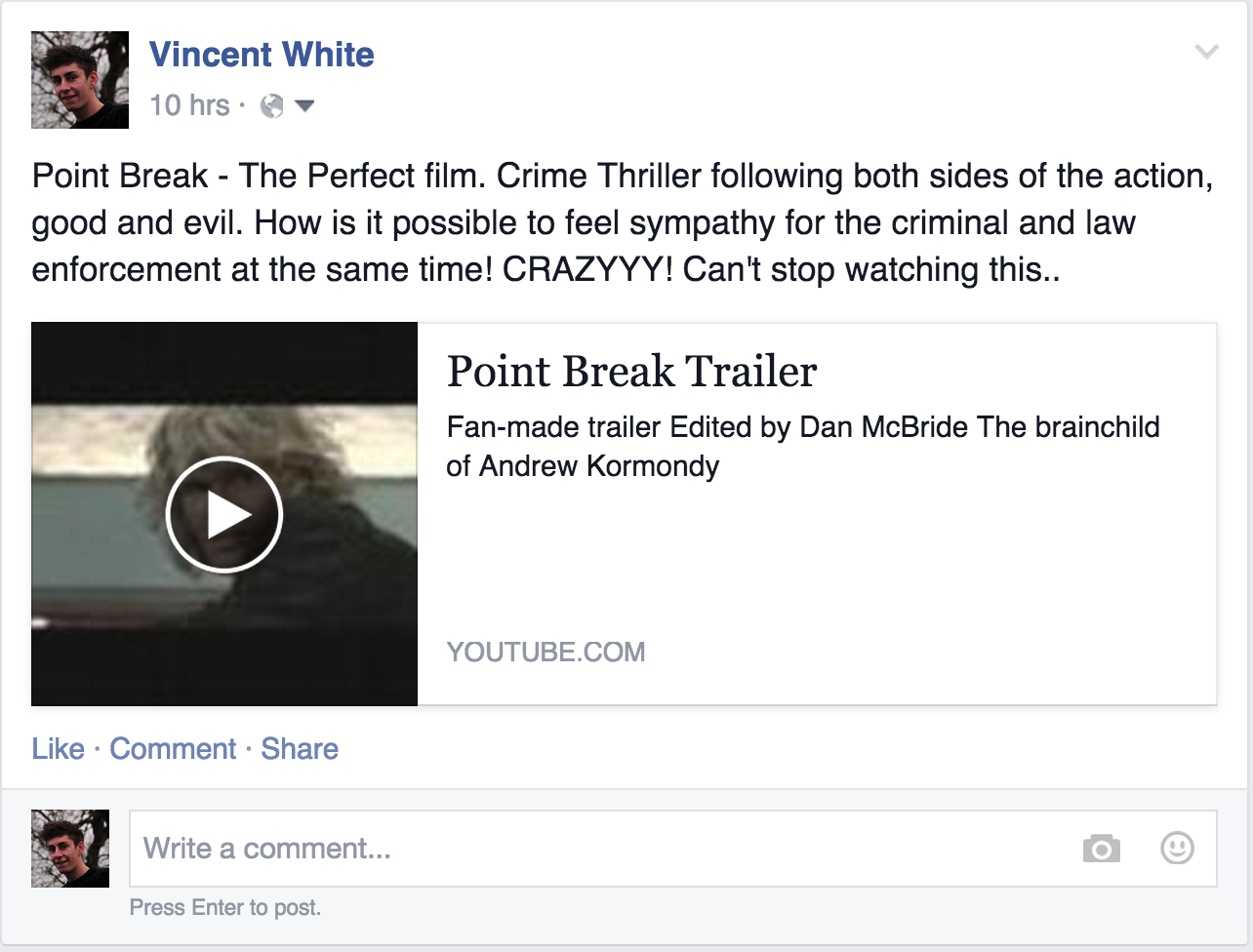
Our target audience would be interested in such films as point break (a legendary Crime Thriller) or films similar to it due to the similar themes in both Point break and what would be my feature length crime thriller.
All of the films that i have listed as the fake profile are either crime thrillers, action thrillers or crime action films. I think this would be the most realistic for the preference of genre of pur target audience as they most likely wouldn't just watch crime thrillers, they would watch a variety of different films that could link into each other in regards to the styles and techniques used. Such films as "Bourne Identity" and "Pulp Fiction" have been listed as they could easily relate to my film in regards to filming techniques.
I have also added some TV programmes that our target audience would be interested in, I have listed Breaking Bad and its current critically acclaimed spin off "Better Call Saul" as I was inspired by both of these series in the creation of my opening sequence before we drastically developed our idea. The two other films that I have listed are "Prison Break" and "Dexter" two incredible crime thriller TV series. "Dexter" in particular closely relates to our thriller in regards to themes, we feel sympathy for the serial killer and we can also empathise with him and understand why he kills, we would also see the murders from the other side, the law enforcement and would empathise with maybe one or two good characters."Prison Break" is a crime thriller but does not have much relativity towards my opening sequence..it's just a really good series that I personally thoroughly enjoyed! (except from after season 2...then it was a lot of effort to watch...but i recommend the first two seasons!)
Monday, 16 March 2015
3. What kind of media institution might distribute your media product and why?
RECAP: I previously chose Alcon entertainment as the institution that would make my Thriller, HOWEVER, this was way back when my Thriller was orientated around both a psychopathic over-protective father and a persistent police officer. As you know, the idea has drastically changed and is now orientated around an ex-military sniper, of course the foundation of the idea has remained, he is still a father that is very protective of his daughter. The genre of the Thriller has changed slightly also, it is a Crime Thriller as it follows both the psychopathic defensive father and a determined police officer. There would be elements of Drama and also small elements of Horror. Overall this Thriller reaches out to a number of different sub-genres, but is definitively a Crime Thriller. After researching different institutions through the films they have created I have come to the final conclusion that Bold Films would be the institution to make my film.
I had previously not heard of Bold Films, however recently they have made an Oscar award winning film called "Whiplash" after hearing how dark the storyline was and how cinematic critics were saying it was I decided to look into the institution out of interest. I went on the website and saw that Bold Films had created some films that I had watched recently and had really enjoyed, they appear to specialise in dark Crime Dramas, Crime Thrillers, Drama and Horror. For me the institution doesn't have to specialise in Crime Thrillers to make my film work. They have made a series of films that are all great in their own right and each have a connection to either the Crime or Thriller genre. Here is a list of the films that Bold Films has made or is in the process of making:
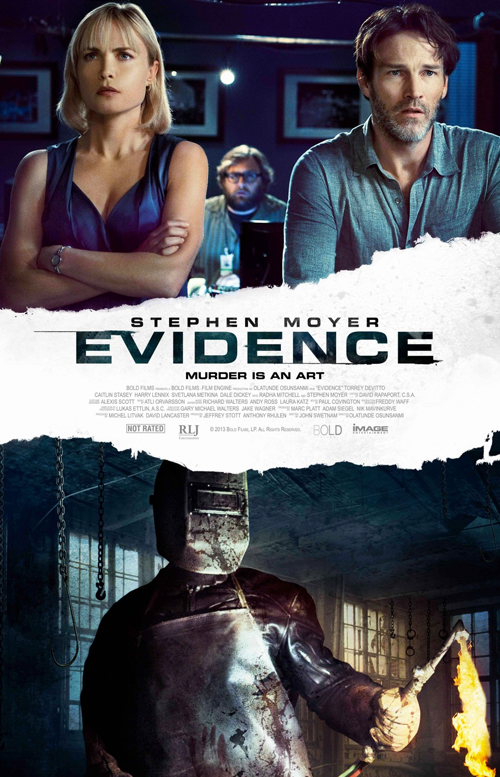

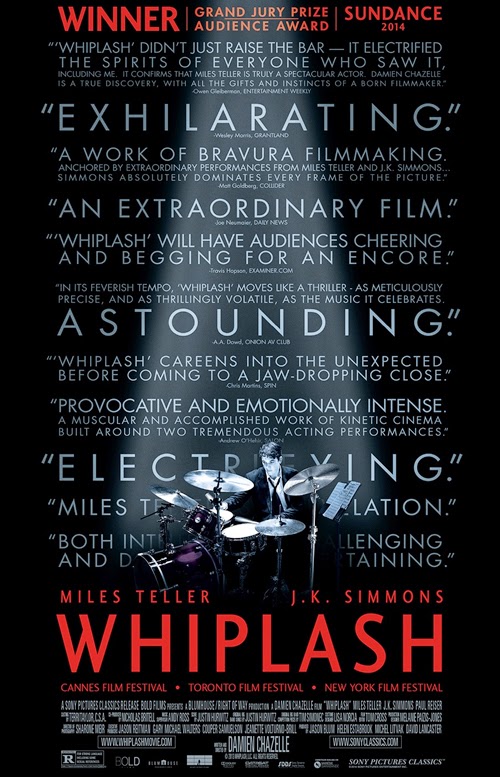
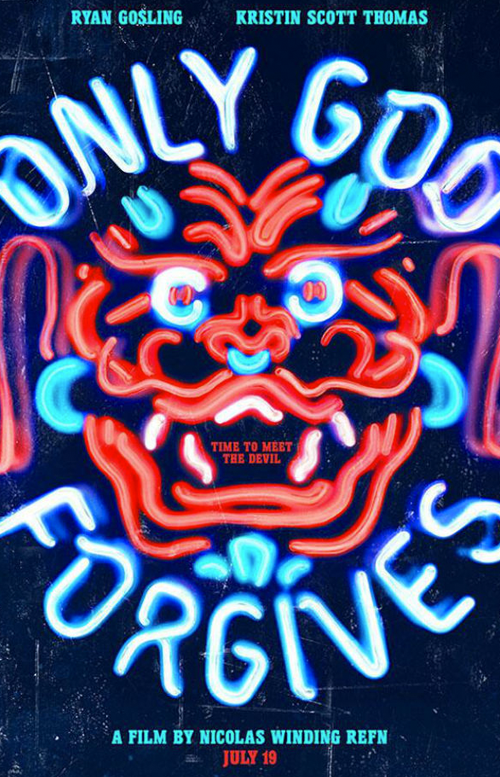
Bold Films have an outstanding ability to make really cinematic films, this certain trait allows the audience to be involved in the film regardless of the genre, the particular way that Bold Films presents its films intrigues me and makes me place them above most other institutions in regards to making my film. Though each film is different, and shot and edited in a different way in different locations, each is stylised and unique. This is very attractive for me as I would want my film to stand out and be different from other films. This was one of the main reasons why I chose this institution.
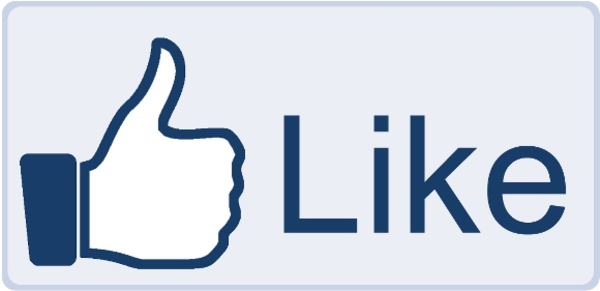 The film would be traditionally marketed via television advertisements, magazine articles, radio advertisements, teaser trailers in cinemas etc. However I would also like to take advantage of modern technologies and advertise my thriller via social medias such as:
The film would be traditionally marketed via television advertisements, magazine articles, radio advertisements, teaser trailers in cinemas etc. However I would also like to take advantage of modern technologies and advertise my thriller via social medias such as:
YOUTUBE - Although Youtube isn't entirely a social network I would use it as part of modern technology advertisement. I would upload a series of teaser trailers and interviews to build hype for the film before releasing the official trailer.
The trailer for "Nightcrawler" is up on youtube, this showcases and advertises the film.
By looking at the different films that Bold Films have made I can conclude that their target audience is both genders from the ages of around 16 - 22, this works very well for me and my Thriller. This is a specific target audience and it is one that matches the target audience for my Thriller, and also the fake facebook profile I made to represent my target audience. For this reason I think it fits in nicely with the other films made by Bold.
I had previously not heard of Bold Films, however recently they have made an Oscar award winning film called "Whiplash" after hearing how dark the storyline was and how cinematic critics were saying it was I decided to look into the institution out of interest. I went on the website and saw that Bold Films had created some films that I had watched recently and had really enjoyed, they appear to specialise in dark Crime Dramas, Crime Thrillers, Drama and Horror. For me the institution doesn't have to specialise in Crime Thrillers to make my film work. They have made a series of films that are all great in their own right and each have a connection to either the Crime or Thriller genre. Here is a list of the films that Bold Films has made or is in the process of making:




Bold Films have an outstanding ability to make really cinematic films, this certain trait allows the audience to be involved in the film regardless of the genre, the particular way that Bold Films presents its films intrigues me and makes me place them above most other institutions in regards to making my film. Though each film is different, and shot and edited in a different way in different locations, each is stylised and unique. This is very attractive for me as I would want my film to stand out and be different from other films. This was one of the main reasons why I chose this institution.
 The film would be traditionally marketed via television advertisements, magazine articles, radio advertisements, teaser trailers in cinemas etc. However I would also like to take advantage of modern technologies and advertise my thriller via social medias such as:
The film would be traditionally marketed via television advertisements, magazine articles, radio advertisements, teaser trailers in cinemas etc. However I would also like to take advantage of modern technologies and advertise my thriller via social medias such as:
FACEBOOK - Facebook is used by over a billion people, it is used on a daily basis by most who use it, after seeing such an inventive social media based campaign by Vertigo Films when marketing "Monsters" I would aim to achieve a similar effect through a weird and creative campaign.
TWITTER - Twitter is similar to Facebook but with less users, also it is less likely that you will see one of your "freinds" posts on Twitter for example if someone that I "Follow" shared a teaser trailer of a film, it will most likely go un seen as the sharing system on twitter is different to facebook, however if someone that I didn't know on Twitter shared a video with a "hashtag" then I could search that hashtag (for example #NightCrawler) and I could see what everyone else using that hashtag had posted..for example teaser trailers, details about the film, interviews etc.
YOUTUBE - Although Youtube isn't entirely a social network I would use it as part of modern technology advertisement. I would upload a series of teaser trailers and interviews to build hype for the film before releasing the official trailer.
The trailer for "Nightcrawler" is up on youtube, this showcases and advertises the film.
By looking at the different films that Bold Films have made I can conclude that their target audience is both genders from the ages of around 16 - 22, this works very well for me and my Thriller. This is a specific target audience and it is one that matches the target audience for my Thriller, and also the fake facebook profile I made to represent my target audience. For this reason I think it fits in nicely with the other films made by Bold.
Sunday, 15 March 2015
2. How does your media product represent particular social groups?
Throughout my Thriller my group and I have chosen to represent different social groups throughout to appeal to the audience by allowing them to understand the plot easier through sing stereotypes. However we also used one or two different archetypes to throw the audience off and build tension by subverting conventions that would have previously been installed in our target audience's minds from other films of the same genre.
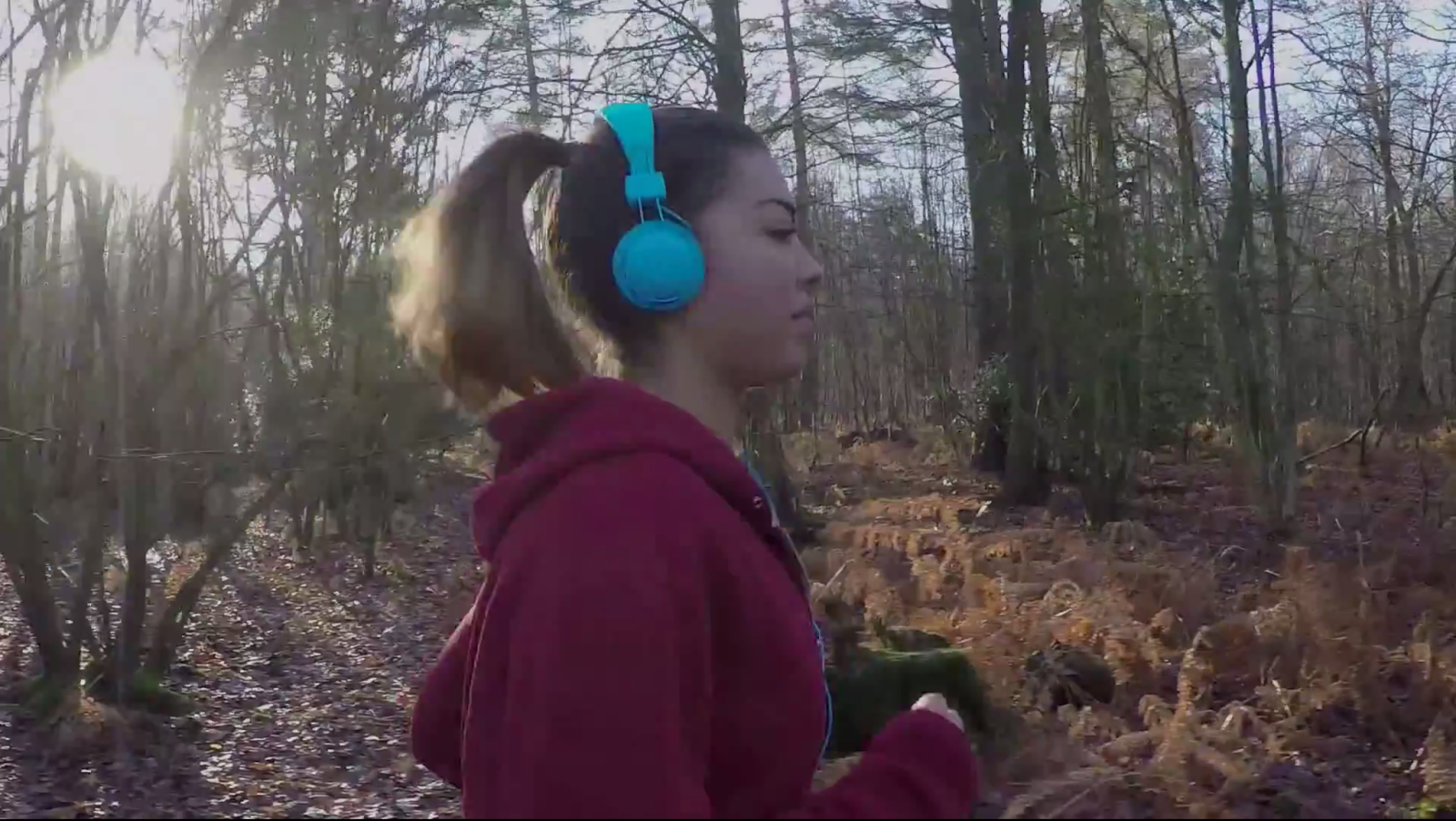
Our female runner is am archetype of vulnerability in young females, the stereotype would be to have a young, fair skinned, light haired, blue eyed girl running through the woods wearing feminine garish clothing and bold colours such as bright pink or blue. Our representation is a dark skinned, dark eyed, dark haired girl wearing a masculine hoody and dark leggings. However as to not rule her out of being a victim for the audience we made sure that our actress (or 5th backup actress) had dark hair with maybe a blond highlight, and if we'd used one of the other actresses we would have used a temporary hair colouring spray or something of the like. Having highlights of blonde amongst the dark hair shows the audience that there is an element of femininity. We also used bright blue headphones, a typically feminine accessory, but we didn't use any other typical feminine props or items of clothing to again show that the running girl is vulnerable to a degree, but isn't guaranteed to be harmed in any way in the Thriller. The girl is wearing expensive looking trainers and running leggings, and also the emphasis on the blue headphones shows that she is wealthy enough to pay for such accessories. This is all a suggestion that she is upper class and again hints that she is a potential target without having her wearing gold jewellery.
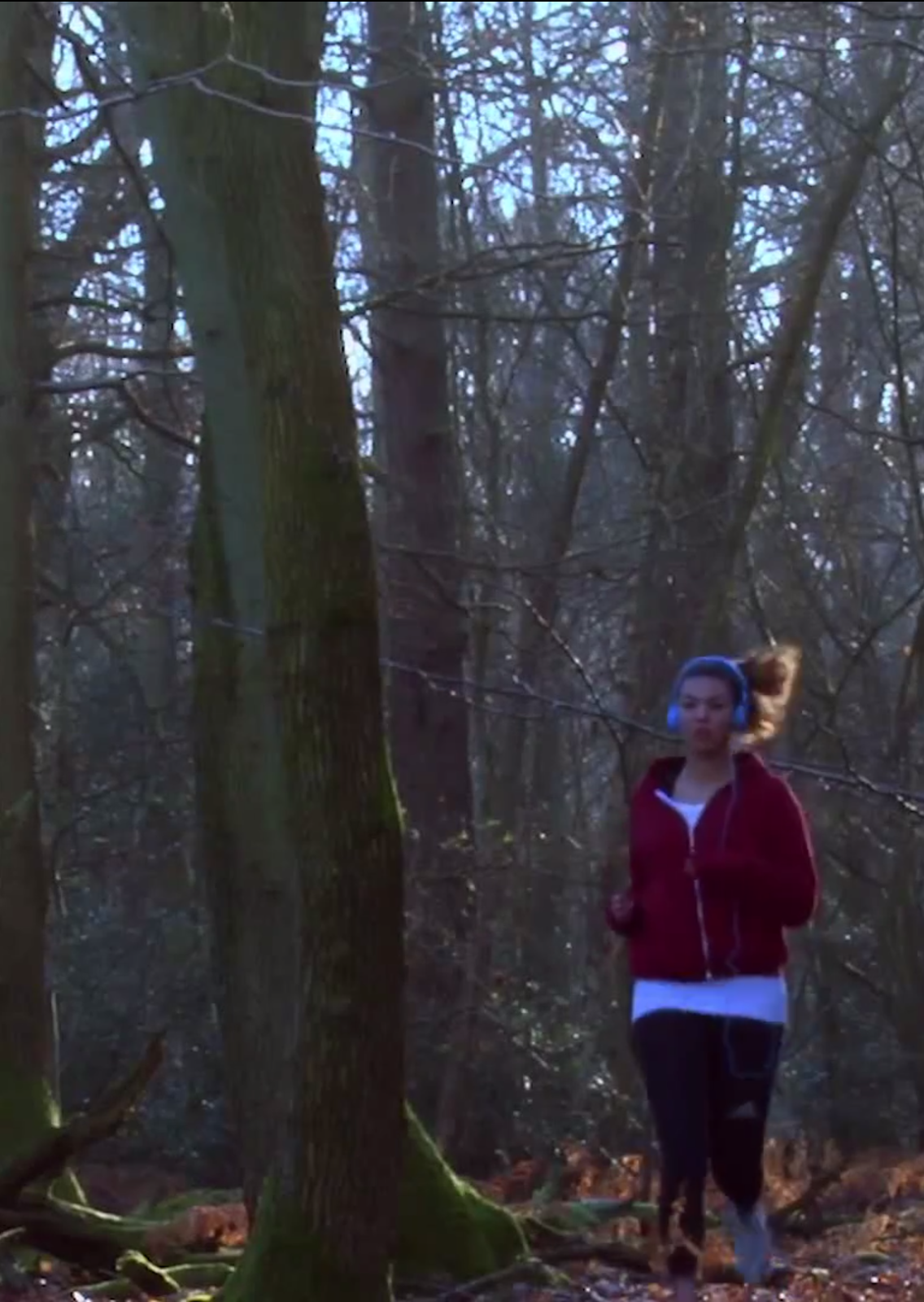
We also chose an actress who is of a healthy build rather than a girl who looked stereotypically very skinny and weak. Our running girl appears strong and stands at an impressive 6 ft tall (Simone is very tall) to reverse connotations of weakness and to adhere to the archetypes of women being strong and dominant.
We used a low angle to introduce the sniper for the first time to exaggerate his dominance and to superimpose his power as he walks on top of a rooftop, metaphorically higher than everyone else. We used these conventions to allow the audience to believe that he has a large presence and is a key part in the opening sequence.
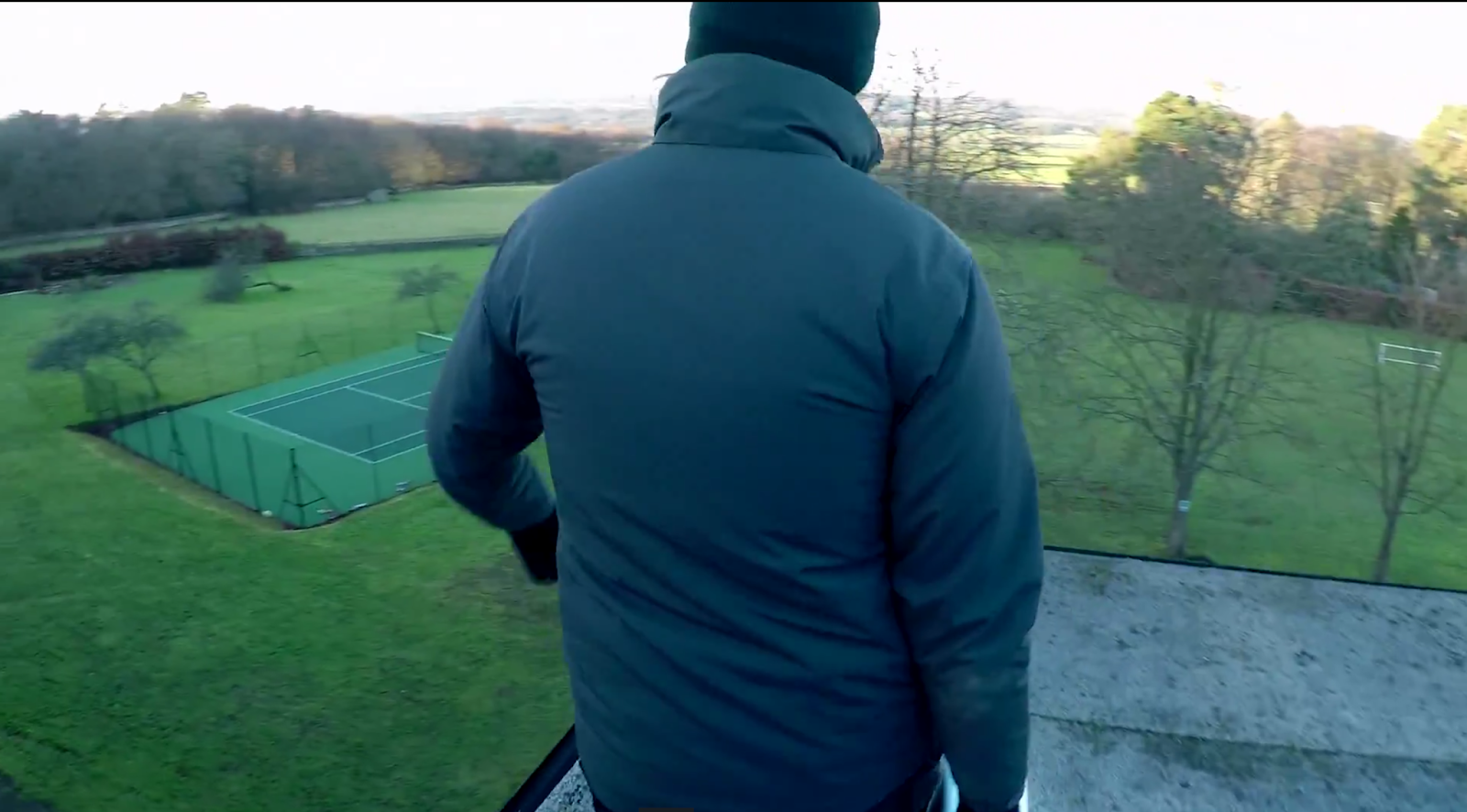
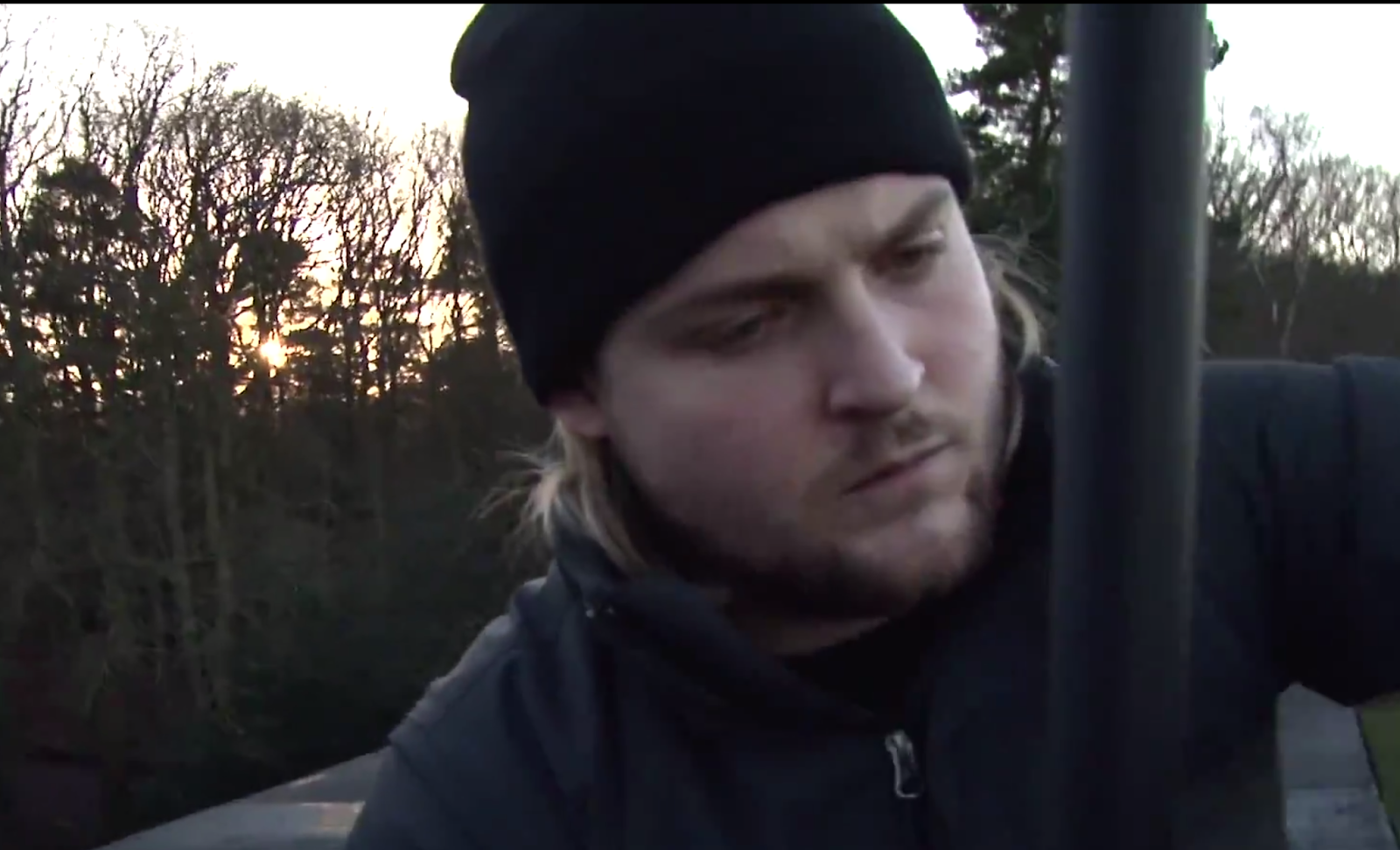 The sniper has a rugged look, bearded with long hair suggests a manual labourer or perhaps ex-military which was the look we were aiming for. There is more of a stereotype leaning towards the working class being killers or related to crime so we wanted to have an actor that looked the part, someone that the audience will expect to kill someone. Of course these apprehensions are confirmed once he opens his case to reveal a large, black sniper rifle.The sniper is seen wearing worker's boots instead of trainers or
The sniper has a rugged look, bearded with long hair suggests a manual labourer or perhaps ex-military which was the look we were aiming for. There is more of a stereotype leaning towards the working class being killers or related to crime so we wanted to have an actor that looked the part, someone that the audience will expect to kill someone. Of course these apprehensions are confirmed once he opens his case to reveal a large, black sniper rifle.The sniper is seen wearing worker's boots instead of trainers or
 other footwear. We chose workers boots to again reinforce the fact that the sniper is from the working class, as you can see he is entirely dressed in black. Black has colour connotations of being evil and dark.
other footwear. We chose workers boots to again reinforce the fact that the sniper is from the working class, as you can see he is entirely dressed in black. Black has colour connotations of being evil and dark.
 I directed the sniper to not smile or smirk, obviously smiling in a film unless there's reason to looks un professional, but when we were filming the actual murder of the male runner and the sniper has to acknowledge the death of the runner, we firstly instructed the actor to smile, however when re-watching the footage we decided that actually we didn't want the sniper to break out of the dark and mysterious character as it would destroy an pre-conceptions of him being evil and borderline psychopathic.
I directed the sniper to not smile or smirk, obviously smiling in a film unless there's reason to looks un professional, but when we were filming the actual murder of the male runner and the sniper has to acknowledge the death of the runner, we firstly instructed the actor to smile, however when re-watching the footage we decided that actually we didn't want the sniper to break out of the dark and mysterious character as it would destroy an pre-conceptions of him being evil and borderline psychopathic.
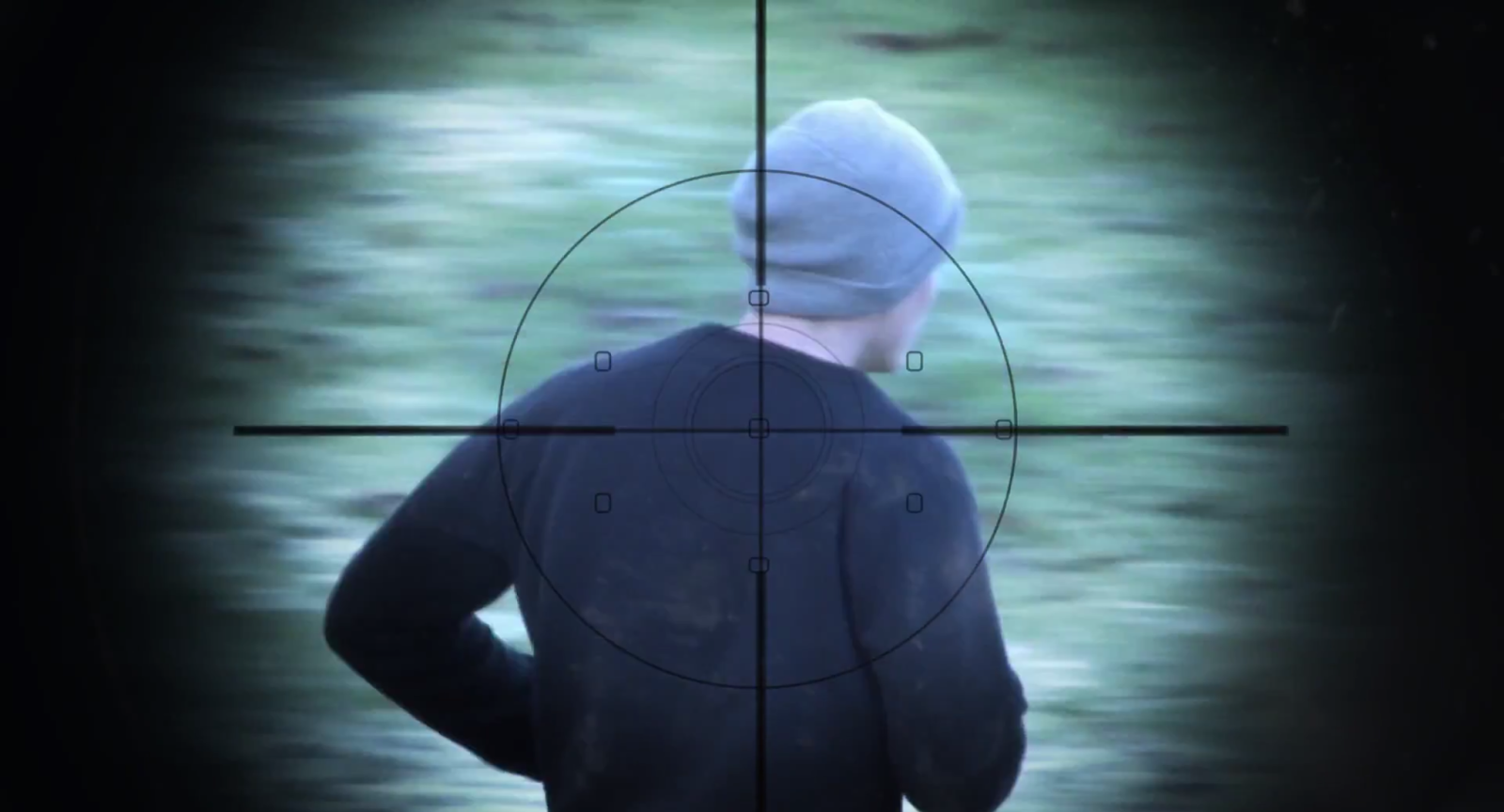 Similarly to the sniper, the male runner is dressed all in black, as said before black expresses connotations of evil and darkness. However the following plot reveals that the runner was innocent and was simply out for a jog without intention of killing anyone, a harmless person. We dressed him to look like a "villain" as we only see him through the scope, through the sniper's eyes and through his mind. In his mind he is evil and out to get his daughter (the female runner). I had to step in as the male runner but I fitted the profile of tall and threatening looking, despite the character not actually being threatening, it is again the sniper's perspective through the scope. The runner's clothes are dirty and he isn't wearing expensive looking clothing which suggests that he is working class, this has both connotations of the audience feeling more sympathy for him being killed as there is a known stereotype of the working class being very hard working and under appreciated so there is the sympathy for a working class victim is increased.
Similarly to the sniper, the male runner is dressed all in black, as said before black expresses connotations of evil and darkness. However the following plot reveals that the runner was innocent and was simply out for a jog without intention of killing anyone, a harmless person. We dressed him to look like a "villain" as we only see him through the scope, through the sniper's eyes and through his mind. In his mind he is evil and out to get his daughter (the female runner). I had to step in as the male runner but I fitted the profile of tall and threatening looking, despite the character not actually being threatening, it is again the sniper's perspective through the scope. The runner's clothes are dirty and he isn't wearing expensive looking clothing which suggests that he is working class, this has both connotations of the audience feeling more sympathy for him being killed as there is a known stereotype of the working class being very hard working and under appreciated so there is the sympathy for a working class victim is increased.
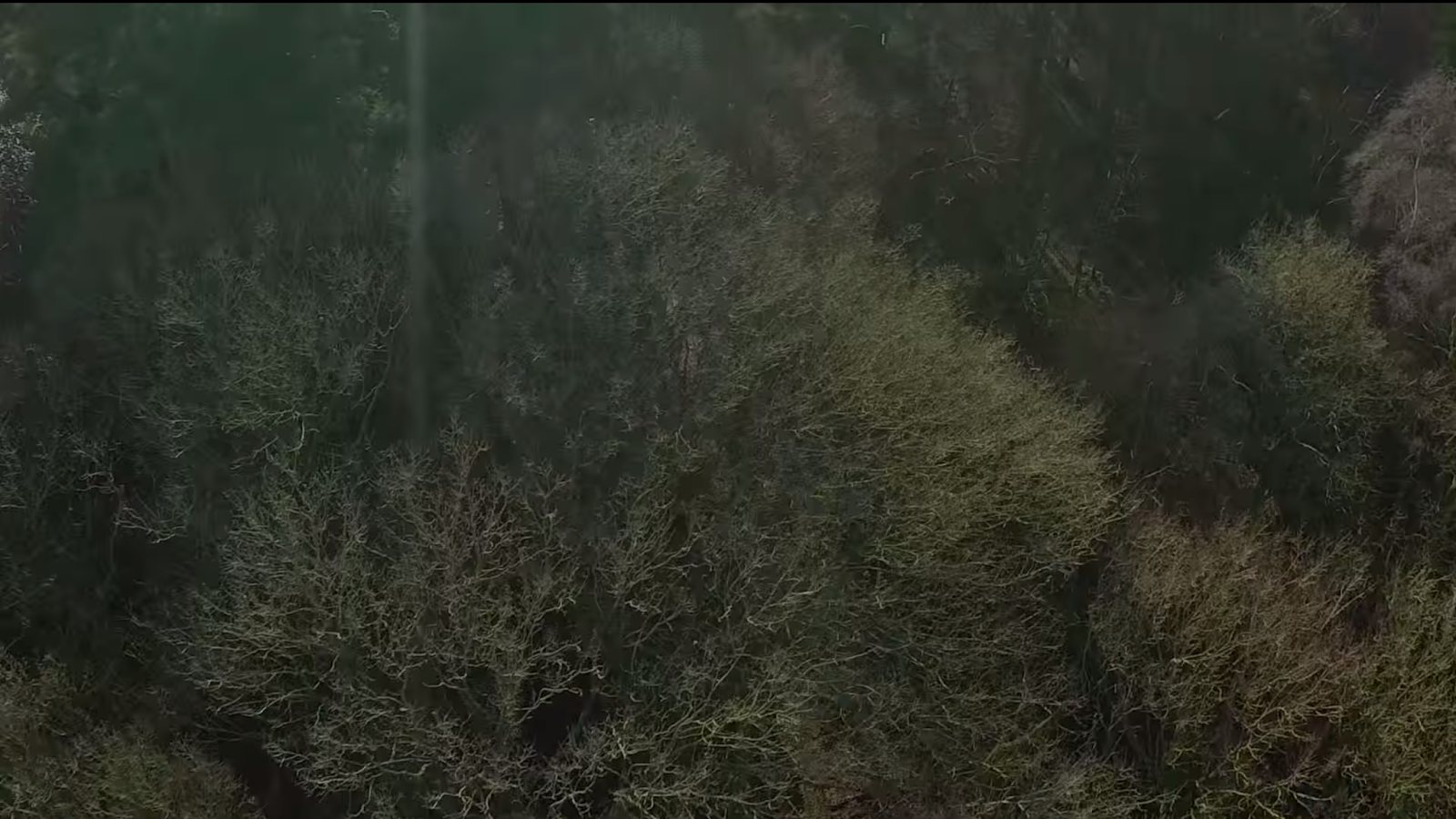
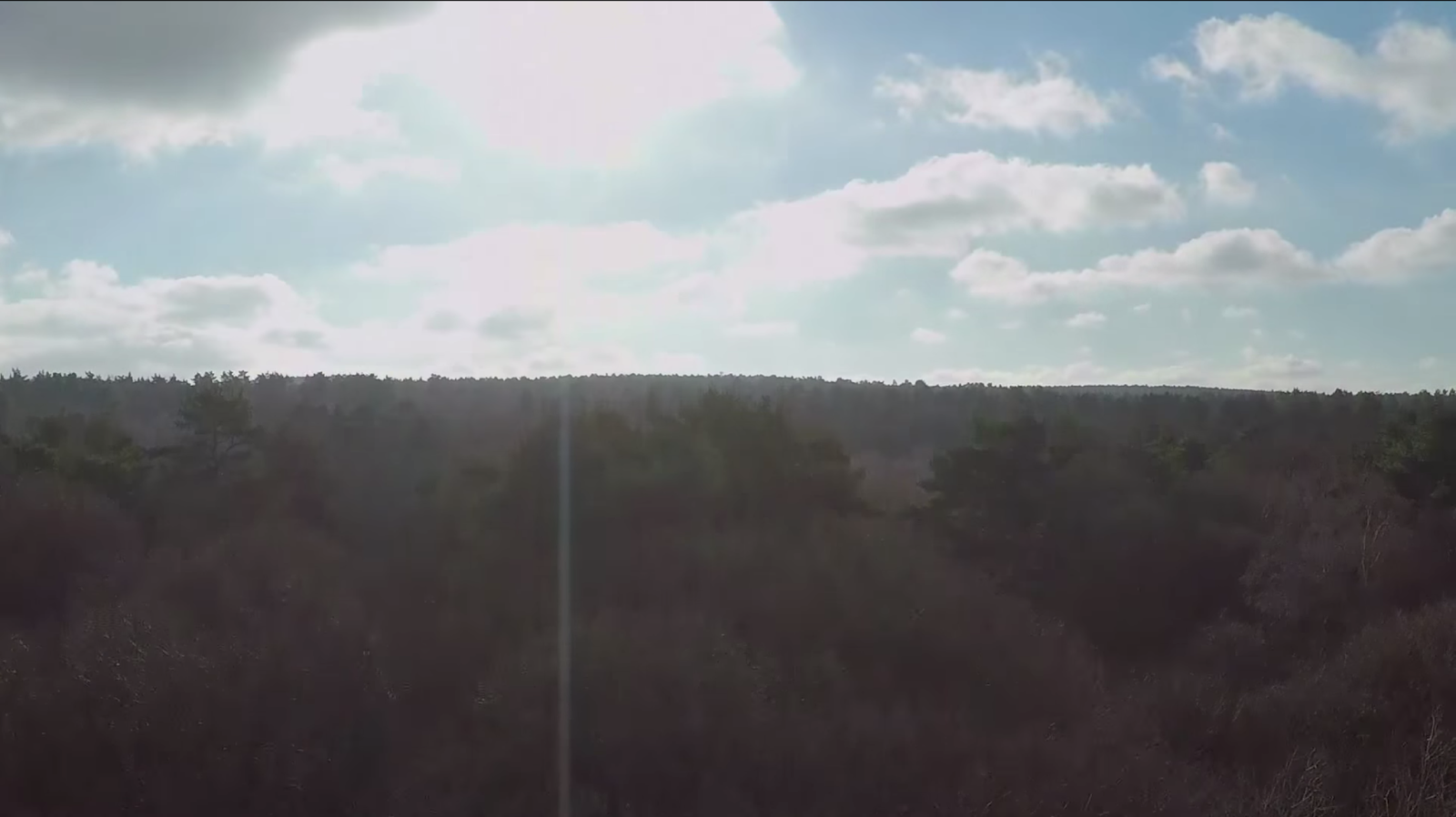 The opening shot is a large, craning shot executed using the drone, the shot rises up above the woods and then tilts down to look at the treetops below, the camera moves above the trees for a while before cutting to a shot of the running girl, this shot was used to show how small and insignificant the girl is amongst the wilderness and how large and daunting the world outside her headphones is. High angles are then used to represent the girl as weak and vulnerable, we played towards the gender stereotype of women being weaker than men to create fake foreshadowing of the female runner being a target.
The opening shot is a large, craning shot executed using the drone, the shot rises up above the woods and then tilts down to look at the treetops below, the camera moves above the trees for a while before cutting to a shot of the running girl, this shot was used to show how small and insignificant the girl is amongst the wilderness and how large and daunting the world outside her headphones is. High angles are then used to represent the girl as weak and vulnerable, we played towards the gender stereotype of women being weaker than men to create fake foreshadowing of the female runner being a target.

When we see what the sniper sees through the scope we are looking down on the girl from the sniper's perspective which again reinforces the stereotype of male dominance.
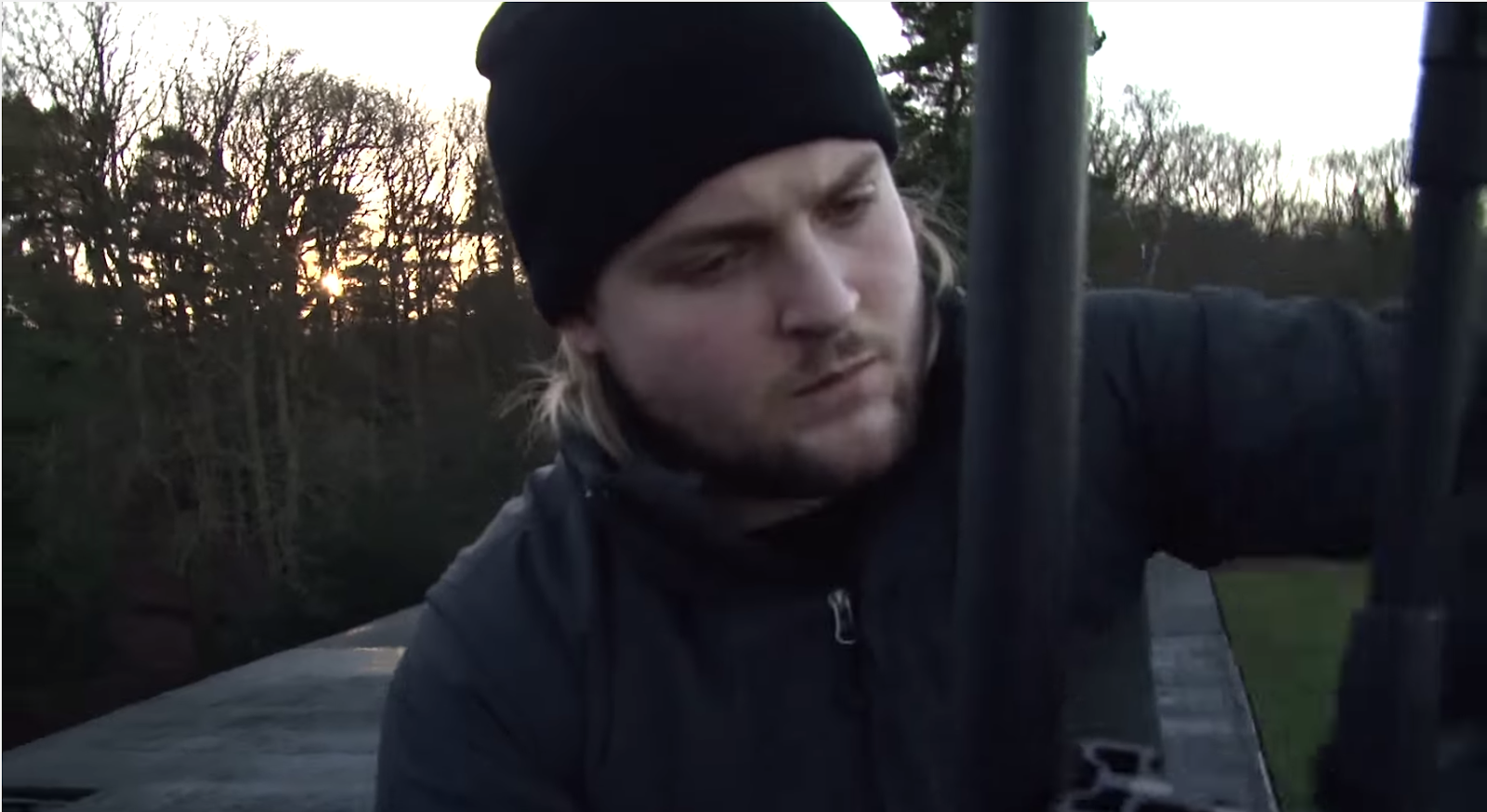
We used the prop rifle as a masculine symbol of power to maintain the stereotype, and it is also used to show the potential threat to the female runner which again makes her seem weak and above all vulnerable.

We used a series of close ups to portray the girl in our thriller, the shots are claustrophobic and show that the girl is in her own compact world. This greatly contrasts the huge opening drone shot showing the large size of the forrest she is in. This contrast shows the audience that she is not aware of how vulnerable she is and that in her mind she is strong in her own world and is oblivious to external threats.
In regards to sound we made all sound effects of the girl quiet and subtle as to not make her seem prominent or domineering, not only did we make the sound effects for the girl quiet , but we also made the sound effects for the sniper louder as to make the the difference in power and status between the characters more severe. For example the noise of her feet crunching on the dry leaves is very quiet in comparison to the heavy footsteps of the sniper as he walks across the gritty rooftop. Also the noises of the sniper cocking and loading his rifle are enhanced as they are short abrupt noises that help to create tension and to also establish quite a bold and intimidating character.

Our female runner is am archetype of vulnerability in young females, the stereotype would be to have a young, fair skinned, light haired, blue eyed girl running through the woods wearing feminine garish clothing and bold colours such as bright pink or blue. Our representation is a dark skinned, dark eyed, dark haired girl wearing a masculine hoody and dark leggings. However as to not rule her out of being a victim for the audience we made sure that our actress (or 5th backup actress) had dark hair with maybe a blond highlight, and if we'd used one of the other actresses we would have used a temporary hair colouring spray or something of the like. Having highlights of blonde amongst the dark hair shows the audience that there is an element of femininity. We also used bright blue headphones, a typically feminine accessory, but we didn't use any other typical feminine props or items of clothing to again show that the running girl is vulnerable to a degree, but isn't guaranteed to be harmed in any way in the Thriller. The girl is wearing expensive looking trainers and running leggings, and also the emphasis on the blue headphones shows that she is wealthy enough to pay for such accessories. This is all a suggestion that she is upper class and again hints that she is a potential target without having her wearing gold jewellery.

We also chose an actress who is of a healthy build rather than a girl who looked stereotypically very skinny and weak. Our running girl appears strong and stands at an impressive 6 ft tall (Simone is very tall) to reverse connotations of weakness and to adhere to the archetypes of women being strong and dominant.
We used a low angle to introduce the sniper for the first time to exaggerate his dominance and to superimpose his power as he walks on top of a rooftop, metaphorically higher than everyone else. We used these conventions to allow the audience to believe that he has a large presence and is a key part in the opening sequence.

 The sniper has a rugged look, bearded with long hair suggests a manual labourer or perhaps ex-military which was the look we were aiming for. There is more of a stereotype leaning towards the working class being killers or related to crime so we wanted to have an actor that looked the part, someone that the audience will expect to kill someone. Of course these apprehensions are confirmed once he opens his case to reveal a large, black sniper rifle.The sniper is seen wearing worker's boots instead of trainers or
The sniper has a rugged look, bearded with long hair suggests a manual labourer or perhaps ex-military which was the look we were aiming for. There is more of a stereotype leaning towards the working class being killers or related to crime so we wanted to have an actor that looked the part, someone that the audience will expect to kill someone. Of course these apprehensions are confirmed once he opens his case to reveal a large, black sniper rifle.The sniper is seen wearing worker's boots instead of trainers or  other footwear. We chose workers boots to again reinforce the fact that the sniper is from the working class, as you can see he is entirely dressed in black. Black has colour connotations of being evil and dark.
other footwear. We chose workers boots to again reinforce the fact that the sniper is from the working class, as you can see he is entirely dressed in black. Black has colour connotations of being evil and dark. I directed the sniper to not smile or smirk, obviously smiling in a film unless there's reason to looks un professional, but when we were filming the actual murder of the male runner and the sniper has to acknowledge the death of the runner, we firstly instructed the actor to smile, however when re-watching the footage we decided that actually we didn't want the sniper to break out of the dark and mysterious character as it would destroy an pre-conceptions of him being evil and borderline psychopathic.
I directed the sniper to not smile or smirk, obviously smiling in a film unless there's reason to looks un professional, but when we were filming the actual murder of the male runner and the sniper has to acknowledge the death of the runner, we firstly instructed the actor to smile, however when re-watching the footage we decided that actually we didn't want the sniper to break out of the dark and mysterious character as it would destroy an pre-conceptions of him being evil and borderline psychopathic. Similarly to the sniper, the male runner is dressed all in black, as said before black expresses connotations of evil and darkness. However the following plot reveals that the runner was innocent and was simply out for a jog without intention of killing anyone, a harmless person. We dressed him to look like a "villain" as we only see him through the scope, through the sniper's eyes and through his mind. In his mind he is evil and out to get his daughter (the female runner). I had to step in as the male runner but I fitted the profile of tall and threatening looking, despite the character not actually being threatening, it is again the sniper's perspective through the scope. The runner's clothes are dirty and he isn't wearing expensive looking clothing which suggests that he is working class, this has both connotations of the audience feeling more sympathy for him being killed as there is a known stereotype of the working class being very hard working and under appreciated so there is the sympathy for a working class victim is increased.
Similarly to the sniper, the male runner is dressed all in black, as said before black expresses connotations of evil and darkness. However the following plot reveals that the runner was innocent and was simply out for a jog without intention of killing anyone, a harmless person. We dressed him to look like a "villain" as we only see him through the scope, through the sniper's eyes and through his mind. In his mind he is evil and out to get his daughter (the female runner). I had to step in as the male runner but I fitted the profile of tall and threatening looking, despite the character not actually being threatening, it is again the sniper's perspective through the scope. The runner's clothes are dirty and he isn't wearing expensive looking clothing which suggests that he is working class, this has both connotations of the audience feeling more sympathy for him being killed as there is a known stereotype of the working class being very hard working and under appreciated so there is the sympathy for a working class victim is increased. 
 The opening shot is a large, craning shot executed using the drone, the shot rises up above the woods and then tilts down to look at the treetops below, the camera moves above the trees for a while before cutting to a shot of the running girl, this shot was used to show how small and insignificant the girl is amongst the wilderness and how large and daunting the world outside her headphones is. High angles are then used to represent the girl as weak and vulnerable, we played towards the gender stereotype of women being weaker than men to create fake foreshadowing of the female runner being a target.
The opening shot is a large, craning shot executed using the drone, the shot rises up above the woods and then tilts down to look at the treetops below, the camera moves above the trees for a while before cutting to a shot of the running girl, this shot was used to show how small and insignificant the girl is amongst the wilderness and how large and daunting the world outside her headphones is. High angles are then used to represent the girl as weak and vulnerable, we played towards the gender stereotype of women being weaker than men to create fake foreshadowing of the female runner being a target.
When we see what the sniper sees through the scope we are looking down on the girl from the sniper's perspective which again reinforces the stereotype of male dominance.

We used the prop rifle as a masculine symbol of power to maintain the stereotype, and it is also used to show the potential threat to the female runner which again makes her seem weak and above all vulnerable.

We used a series of close ups to portray the girl in our thriller, the shots are claustrophobic and show that the girl is in her own compact world. This greatly contrasts the huge opening drone shot showing the large size of the forrest she is in. This contrast shows the audience that she is not aware of how vulnerable she is and that in her mind she is strong in her own world and is oblivious to external threats.
In regards to sound we made all sound effects of the girl quiet and subtle as to not make her seem prominent or domineering, not only did we make the sound effects for the girl quiet , but we also made the sound effects for the sniper louder as to make the the difference in power and status between the characters more severe. For example the noise of her feet crunching on the dry leaves is very quiet in comparison to the heavy footsteps of the sniper as he walks across the gritty rooftop. Also the noises of the sniper cocking and loading his rifle are enhanced as they are short abrupt noises that help to create tension and to also establish quite a bold and intimidating character.
Saturday, 14 March 2015
1. In what ways does your media product use, develop or challenge forms and conventions of real media products?
I have made a video that answers this question: In what ways does your media product use, develop or challenge forms and conventions of real media products?
I compare my Thriller with such films as American Sniper an Leon as they both convey similar themes and conventions to our Thriller opening sequence.
I compare my Thriller with such films as American Sniper an Leon as they both convey similar themes and conventions to our Thriller opening sequence.
Friday, 13 March 2015
Editing - audio
After completing the picture cut of the opening sequence it was time to make the audio cut, which was effectively an ambients audio cut as we weren't yet able to add a soundtrack. We always knew we were going to add a soundtrack to the sequence but we didn't know exactly what soundtrack we would use, and even if we had had an idea of what we were going to use it would have changed due to the amount our thriller had changed during the picture cut stage of the editing process.
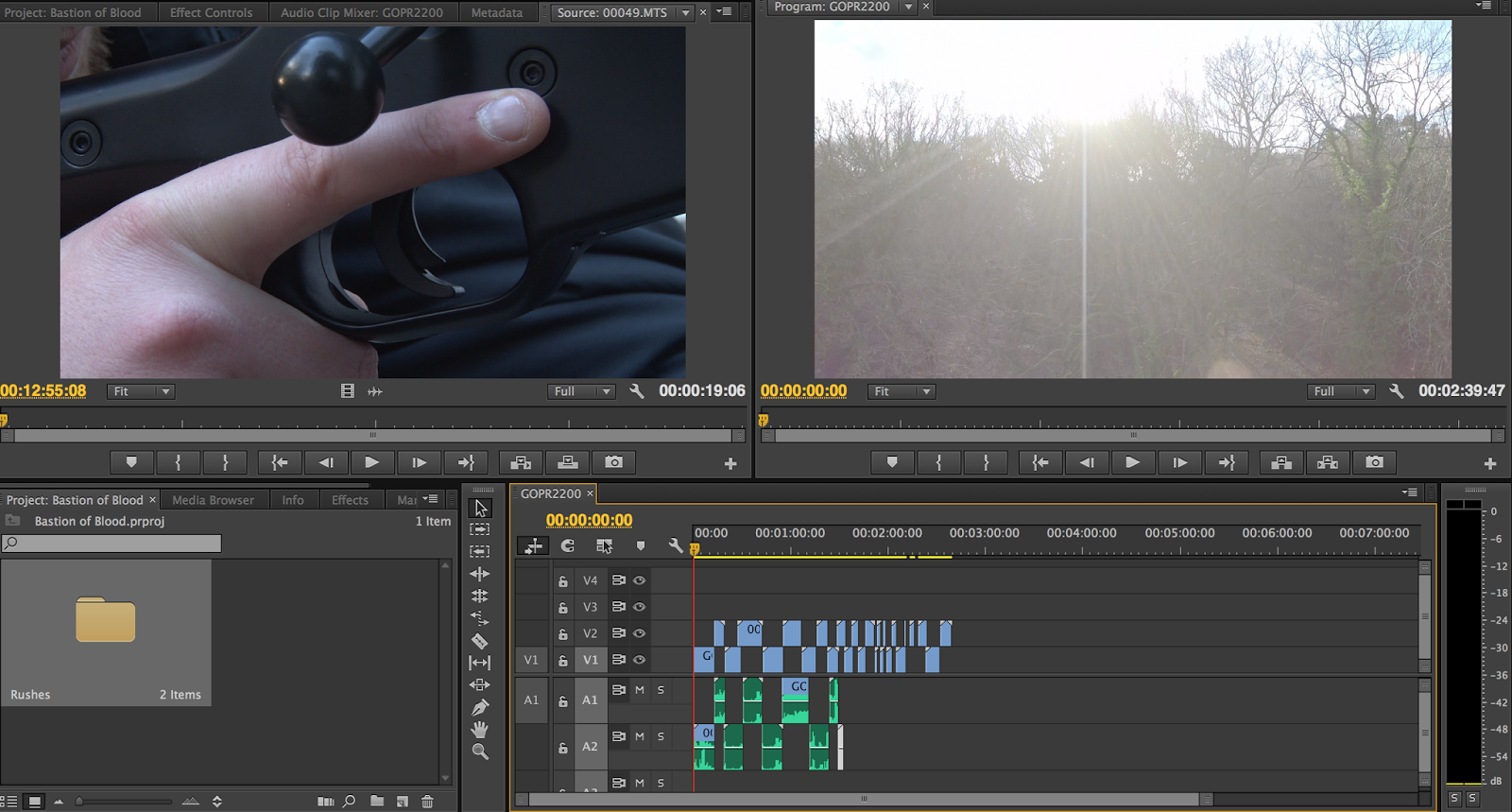 Firstly I had to decide which of the audio clips from their original rushes could be used without having to add in audio from other clips, I would have to do this as some of the audio files from the original rushes may have been contaminated by voices of the crew, wind disturbance, microphone failure (due to someone stepping on the external microphone cable or other)
Firstly I had to decide which of the audio clips from their original rushes could be used without having to add in audio from other clips, I would have to do this as some of the audio files from the original rushes may have been contaminated by voices of the crew, wind disturbance, microphone failure (due to someone stepping on the external microphone cable or other)

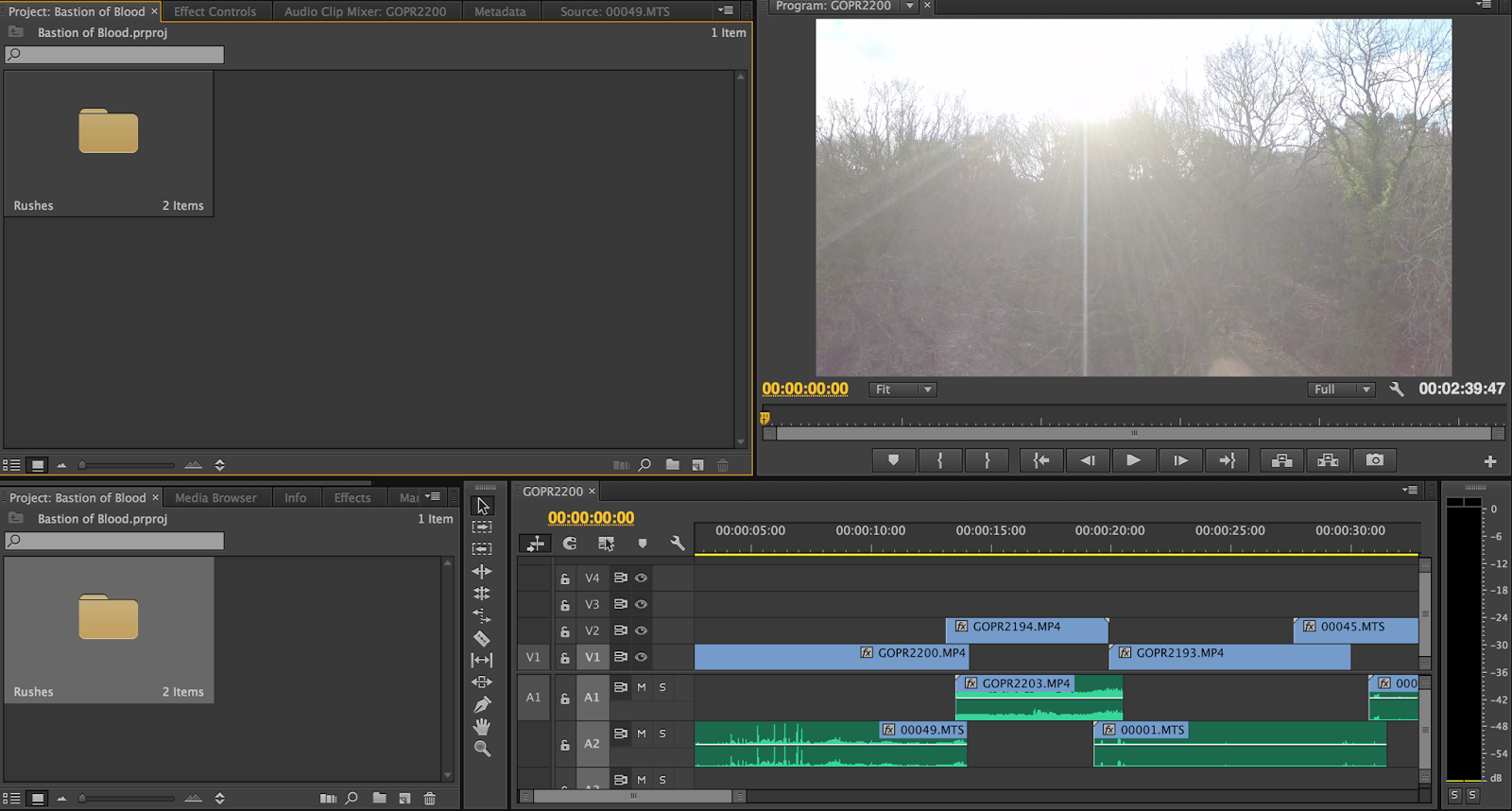 As you can see there is one blue bar (the video) and two green bars (the audio). There are two audio wave forms due to us filming with the general microphone that the Sony NX5 came with, and we also used an external microphone, a rifle mic. There are two audio channels incase there is a fault with one of the microphones during a shot, such as the possible reasons I stated earlier. The rifle mic is of a far better quality than the stock microphone and is more precise with what audio it picks up.
As you can see there is one blue bar (the video) and two green bars (the audio). There are two audio wave forms due to us filming with the general microphone that the Sony NX5 came with, and we also used an external microphone, a rifle mic. There are two audio channels incase there is a fault with one of the microphones during a shot, such as the possible reasons I stated earlier. The rifle mic is of a far better quality than the stock microphone and is more precise with what audio it picks up.
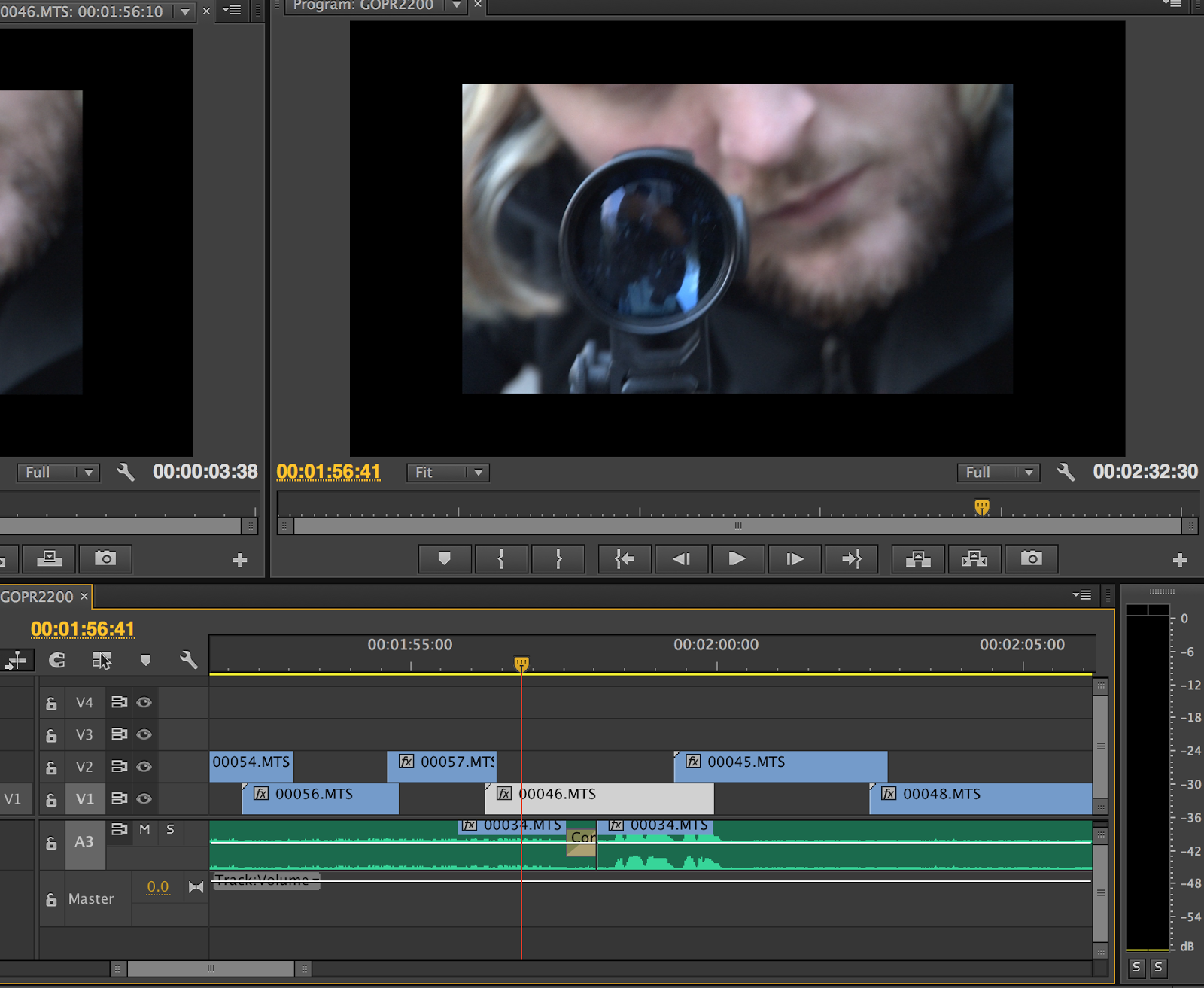 Finding the audio from one clip to put over a different clip is a difficult process, although you can get away with a lot, for example if I shot five takes of the sniper getting up and taking his rifle away with him, I could use audio from any of the four clips within reason, slowing them down, making them quieter etc. until the sound fits the video, I had to do this a lot as we were unlucky to get a fair few audio errors on some of the good shots that we actually wanted to use, which meant finding a lot of audio from other clips!
Finding the audio from one clip to put over a different clip is a difficult process, although you can get away with a lot, for example if I shot five takes of the sniper getting up and taking his rifle away with him, I could use audio from any of the four clips within reason, slowing them down, making them quieter etc. until the sound fits the video, I had to do this a lot as we were unlucky to get a fair few audio errors on some of the good shots that we actually wanted to use, which meant finding a lot of audio from other clips!
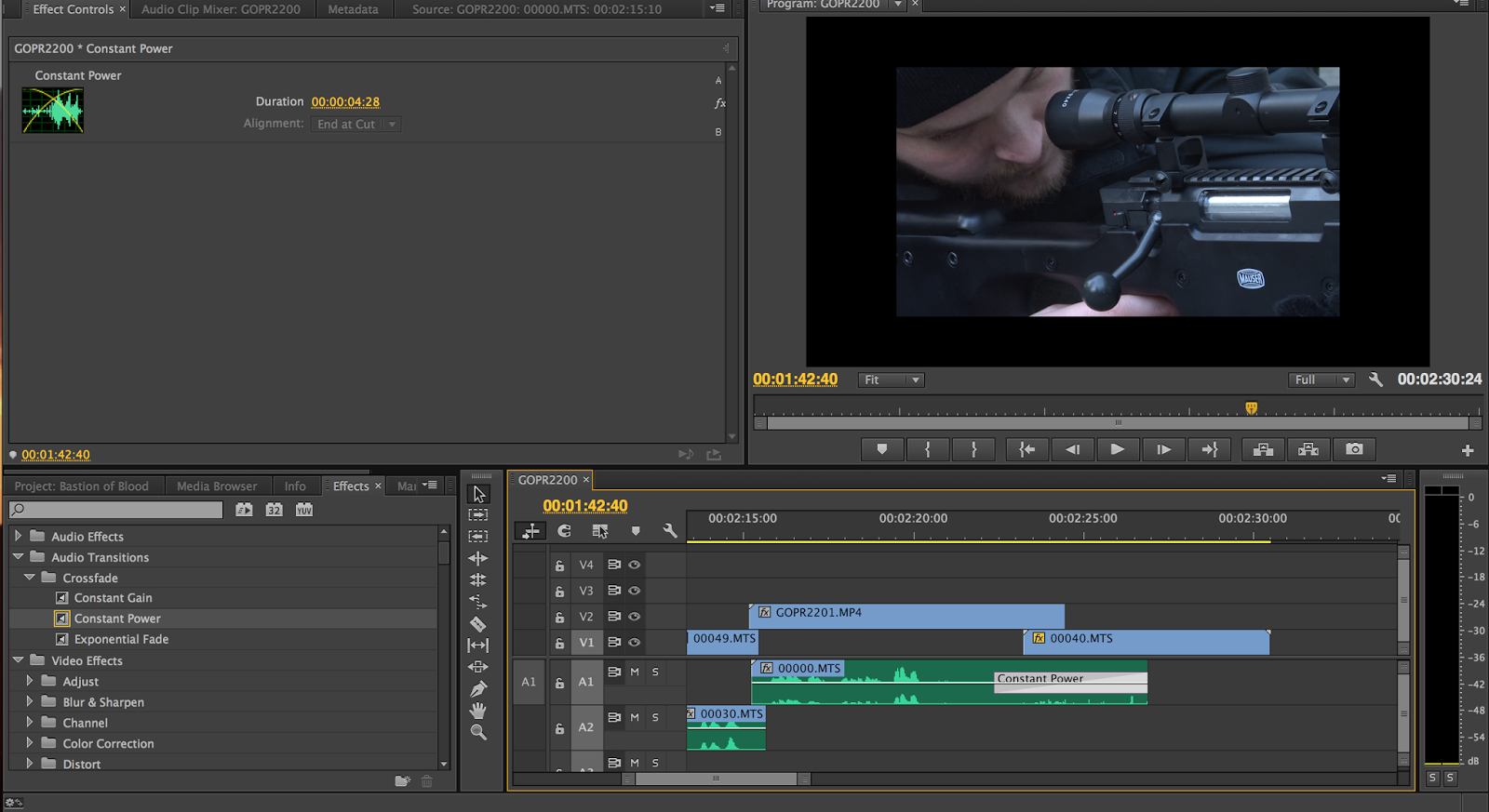 As I was constantly using audio that cut in suddenly and sounded awful I had to find a way to soften the sound and make the transition less abrupt and noticeable. One easy way to do this was to have a constant ambient sound recording from the shoot day on a loop to underlay all the other audio, this was so I could easily cut in and out of different sections of audio without making it sound unprofessional and obvious. However the sound transition was still a little abrupt, so I fixed it by using a constant power on the audio channel. A constant power is effectively a Cross fade for audio. I did this by selecting the effects window and then opening the audio transition folder which gave me the option to add a constant power to whatever audio clip I wanted, so I dragged the effect to all the different clips I needed to, including all of the ambient sound channels as it would be very obvious if they suddenly cut to the beginning of the clip. The constant power faded the audio into one another which was really helpful for me and made the sound flow seamlessly.
As I was constantly using audio that cut in suddenly and sounded awful I had to find a way to soften the sound and make the transition less abrupt and noticeable. One easy way to do this was to have a constant ambient sound recording from the shoot day on a loop to underlay all the other audio, this was so I could easily cut in and out of different sections of audio without making it sound unprofessional and obvious. However the sound transition was still a little abrupt, so I fixed it by using a constant power on the audio channel. A constant power is effectively a Cross fade for audio. I did this by selecting the effects window and then opening the audio transition folder which gave me the option to add a constant power to whatever audio clip I wanted, so I dragged the effect to all the different clips I needed to, including all of the ambient sound channels as it would be very obvious if they suddenly cut to the beginning of the clip. The constant power faded the audio into one another which was really helpful for me and made the sound flow seamlessly.
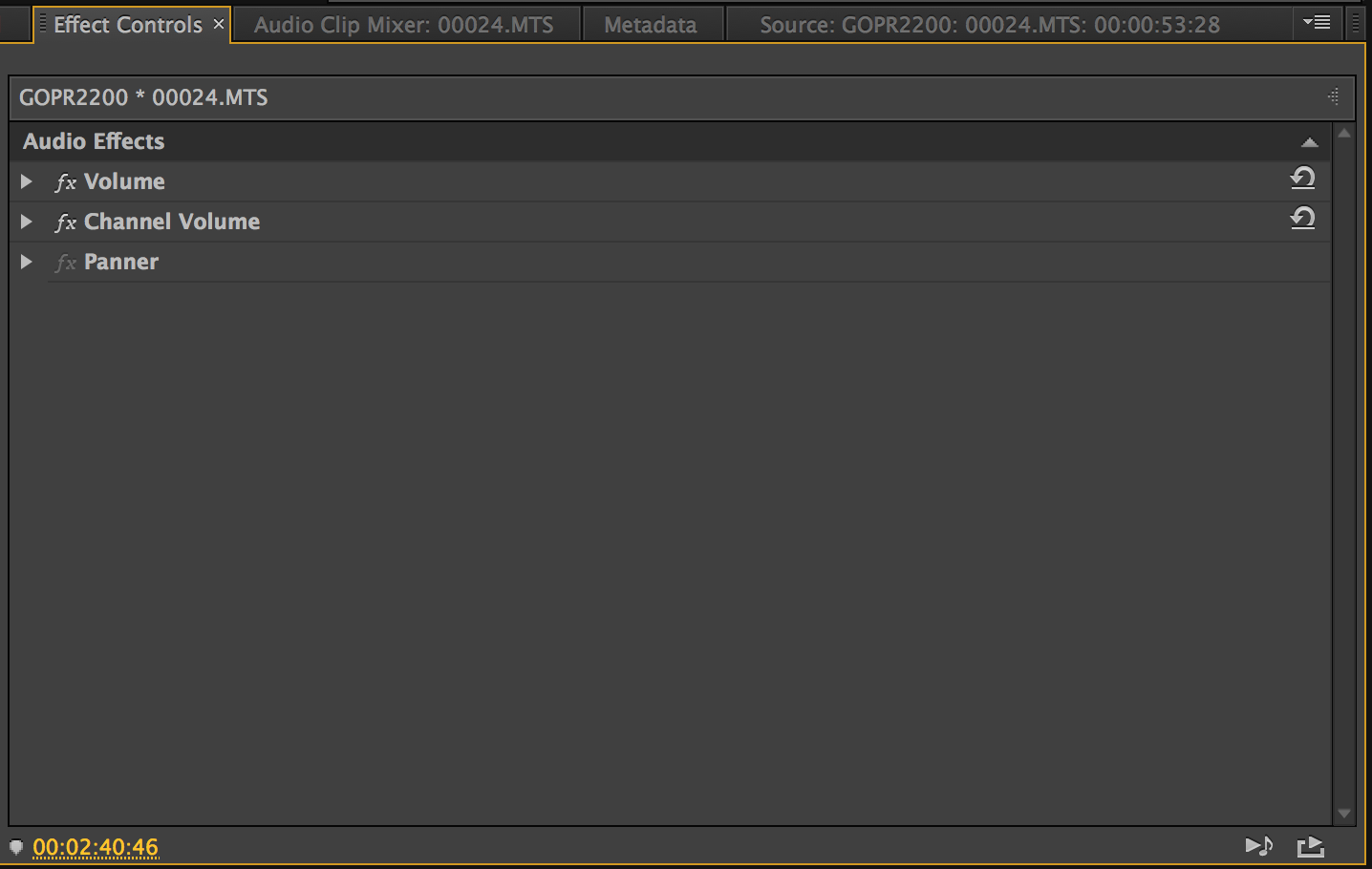
A lot of the time I had to adjust the level of the sound for each individual clip, this meant that I had to keyframe the audio and adjust the decibels of the clip. This key framing process is very similar to key framing video. You simply click on the clip you wish to edit, go on to the effects tab and the screen on the right should open up.

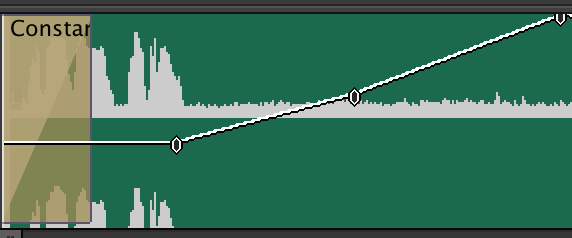
Once you're ready, you click on the stopwatch tool again which starts the key framing, you can then adjust the decibels at whatever intervals you choose throughout the clip and premiere will automatically adjust the sound between the key frames of audio.
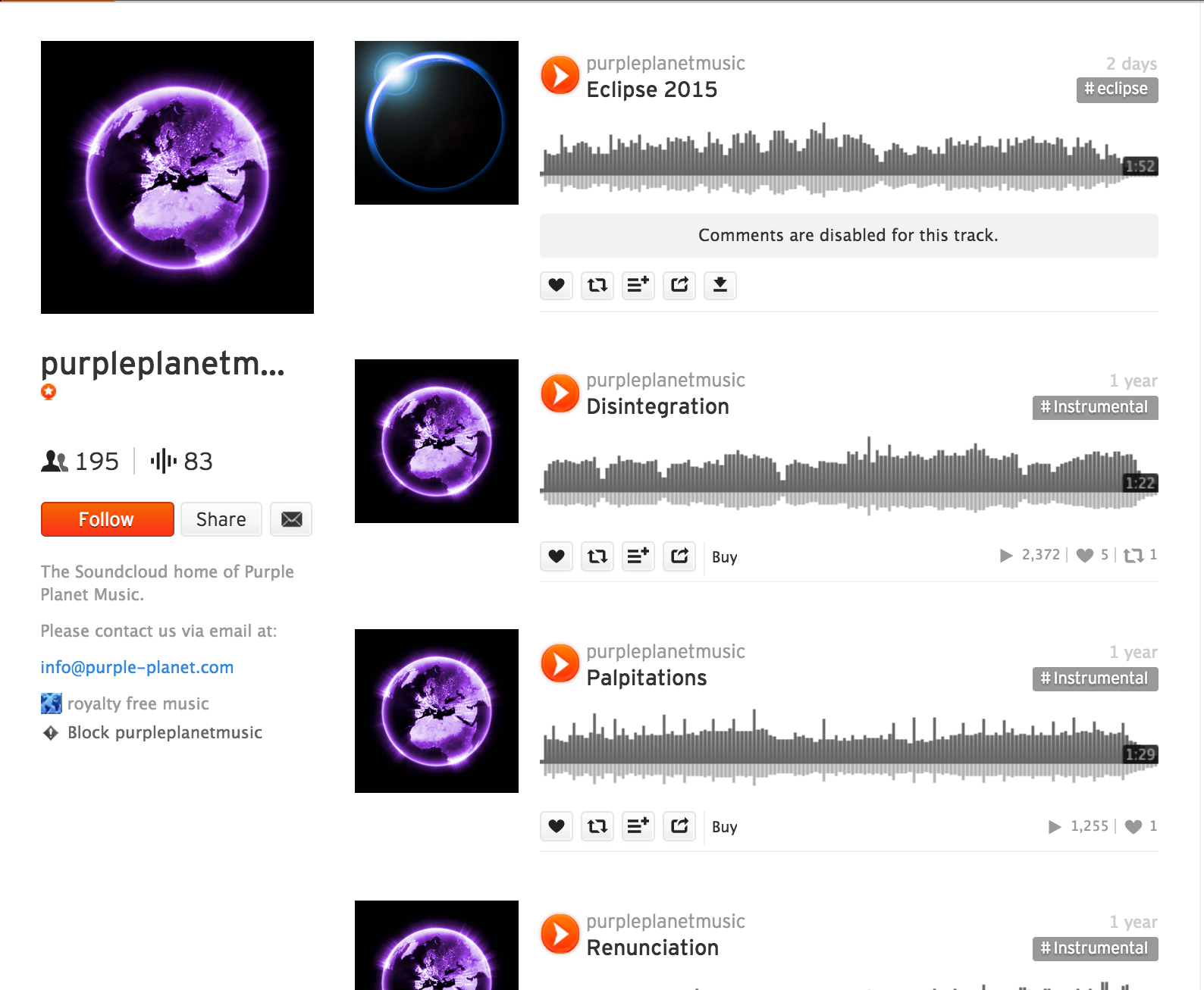
 As for the soundtrack to our thriller, we looked on a royalty free music website called purple planet music, we looked through all the tracks on the website and found a soundcloud account that gave a list of their posts, all soundtracks and most of them with eery and thriller like soundtracks.
As for the soundtrack to our thriller, we looked on a royalty free music website called purple planet music, we looked through all the tracks on the website and found a soundcloud account that gave a list of their posts, all soundtracks and most of them with eery and thriller like soundtracks.
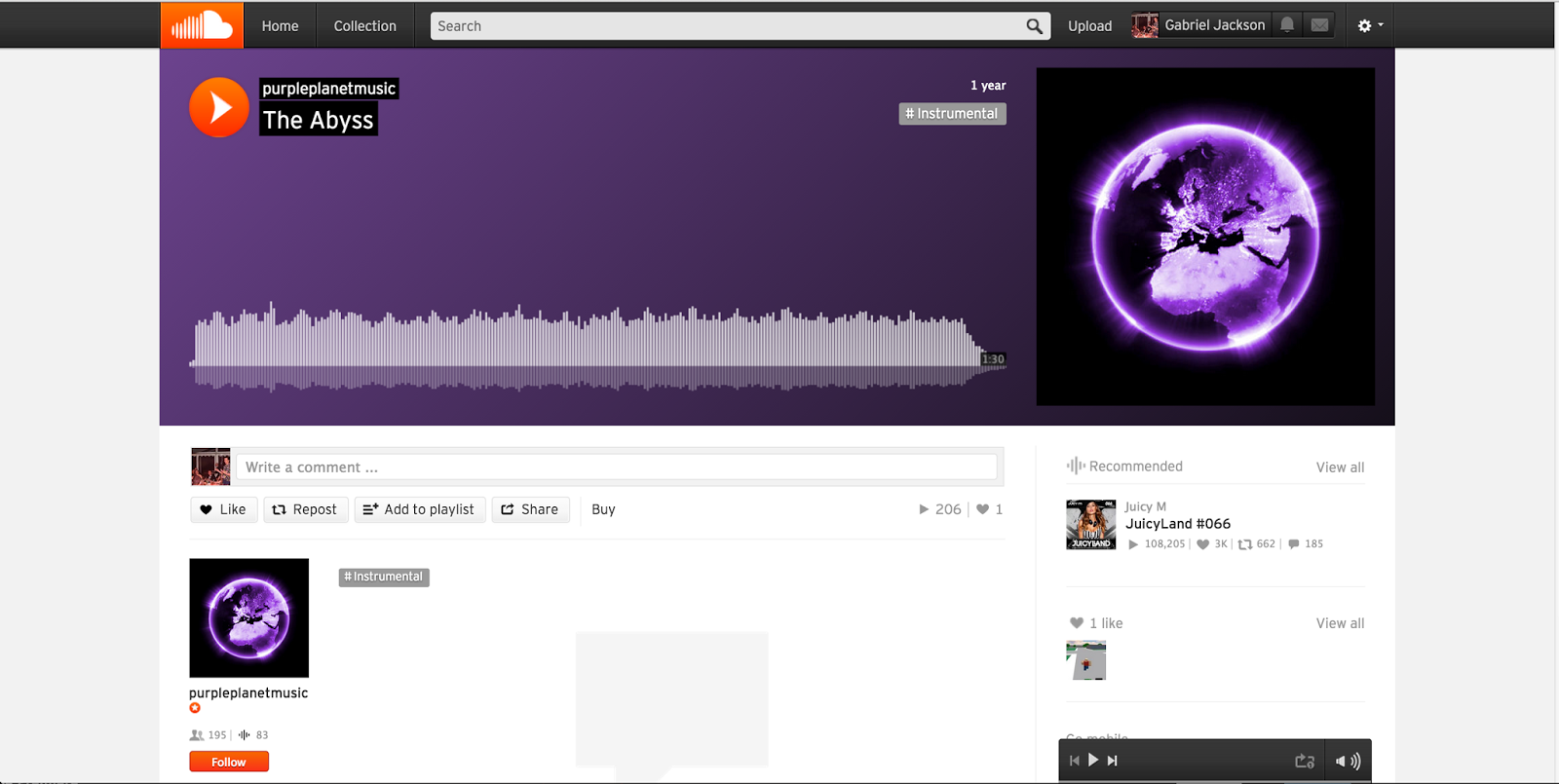 We found a track called "The Abyss" which we downloaded and used in our Thriller throughout, we cut it up and adjusted the volumes of each snippet, and we overlapped the clips toc reate an aggressive rumbling noise which assisted in the building of the tension.
We found a track called "The Abyss" which we downloaded and used in our Thriller throughout, we cut it up and adjusted the volumes of each snippet, and we overlapped the clips toc reate an aggressive rumbling noise which assisted in the building of the tension.
 Firstly I had to decide which of the audio clips from their original rushes could be used without having to add in audio from other clips, I would have to do this as some of the audio files from the original rushes may have been contaminated by voices of the crew, wind disturbance, microphone failure (due to someone stepping on the external microphone cable or other)
Firstly I had to decide which of the audio clips from their original rushes could be used without having to add in audio from other clips, I would have to do this as some of the audio files from the original rushes may have been contaminated by voices of the crew, wind disturbance, microphone failure (due to someone stepping on the external microphone cable or other) 
 As you can see there is one blue bar (the video) and two green bars (the audio). There are two audio wave forms due to us filming with the general microphone that the Sony NX5 came with, and we also used an external microphone, a rifle mic. There are two audio channels incase there is a fault with one of the microphones during a shot, such as the possible reasons I stated earlier. The rifle mic is of a far better quality than the stock microphone and is more precise with what audio it picks up.
As you can see there is one blue bar (the video) and two green bars (the audio). There are two audio wave forms due to us filming with the general microphone that the Sony NX5 came with, and we also used an external microphone, a rifle mic. There are two audio channels incase there is a fault with one of the microphones during a shot, such as the possible reasons I stated earlier. The rifle mic is of a far better quality than the stock microphone and is more precise with what audio it picks up. Finding the audio from one clip to put over a different clip is a difficult process, although you can get away with a lot, for example if I shot five takes of the sniper getting up and taking his rifle away with him, I could use audio from any of the four clips within reason, slowing them down, making them quieter etc. until the sound fits the video, I had to do this a lot as we were unlucky to get a fair few audio errors on some of the good shots that we actually wanted to use, which meant finding a lot of audio from other clips!
Finding the audio from one clip to put over a different clip is a difficult process, although you can get away with a lot, for example if I shot five takes of the sniper getting up and taking his rifle away with him, I could use audio from any of the four clips within reason, slowing them down, making them quieter etc. until the sound fits the video, I had to do this a lot as we were unlucky to get a fair few audio errors on some of the good shots that we actually wanted to use, which meant finding a lot of audio from other clips!  As I was constantly using audio that cut in suddenly and sounded awful I had to find a way to soften the sound and make the transition less abrupt and noticeable. One easy way to do this was to have a constant ambient sound recording from the shoot day on a loop to underlay all the other audio, this was so I could easily cut in and out of different sections of audio without making it sound unprofessional and obvious. However the sound transition was still a little abrupt, so I fixed it by using a constant power on the audio channel. A constant power is effectively a Cross fade for audio. I did this by selecting the effects window and then opening the audio transition folder which gave me the option to add a constant power to whatever audio clip I wanted, so I dragged the effect to all the different clips I needed to, including all of the ambient sound channels as it would be very obvious if they suddenly cut to the beginning of the clip. The constant power faded the audio into one another which was really helpful for me and made the sound flow seamlessly.
As I was constantly using audio that cut in suddenly and sounded awful I had to find a way to soften the sound and make the transition less abrupt and noticeable. One easy way to do this was to have a constant ambient sound recording from the shoot day on a loop to underlay all the other audio, this was so I could easily cut in and out of different sections of audio without making it sound unprofessional and obvious. However the sound transition was still a little abrupt, so I fixed it by using a constant power on the audio channel. A constant power is effectively a Cross fade for audio. I did this by selecting the effects window and then opening the audio transition folder which gave me the option to add a constant power to whatever audio clip I wanted, so I dragged the effect to all the different clips I needed to, including all of the ambient sound channels as it would be very obvious if they suddenly cut to the beginning of the clip. The constant power faded the audio into one another which was really helpful for me and made the sound flow seamlessly. 
A lot of the time I had to adjust the level of the sound for each individual clip, this meant that I had to keyframe the audio and adjust the decibels of the clip. This key framing process is very similar to key framing video. You simply click on the clip you wish to edit, go on to the effects tab and the screen on the right should open up.


Once you're ready, you click on the stopwatch tool again which starts the key framing, you can then adjust the decibels at whatever intervals you choose throughout the clip and premiere will automatically adjust the sound between the key frames of audio.

 As for the soundtrack to our thriller, we looked on a royalty free music website called purple planet music, we looked through all the tracks on the website and found a soundcloud account that gave a list of their posts, all soundtracks and most of them with eery and thriller like soundtracks.
As for the soundtrack to our thriller, we looked on a royalty free music website called purple planet music, we looked through all the tracks on the website and found a soundcloud account that gave a list of their posts, all soundtracks and most of them with eery and thriller like soundtracks.  We found a track called "The Abyss" which we downloaded and used in our Thriller throughout, we cut it up and adjusted the volumes of each snippet, and we overlapped the clips toc reate an aggressive rumbling noise which assisted in the building of the tension.
We found a track called "The Abyss" which we downloaded and used in our Thriller throughout, we cut it up and adjusted the volumes of each snippet, and we overlapped the clips toc reate an aggressive rumbling noise which assisted in the building of the tension.Thursday, 12 March 2015
Editing - Picture Cut
To start the picture cut of the editing process my group and I put all of the footage captured on the shoot day into a new "bin" on adobe premier pro. A bin is effectively a folder to store all of the footage you are going to use in. We entitled the bin "Rushes" as rushes is the professional term for raw footage effectively. This made the workspace a little more clean and less overwhelming.
We then created two new bins within "Rushes" called "NX5" and "Drone" as we had two different cameras on the day, the drone and the Sony NX5, so creating two different bins for footage from each camera made the process of finding the clips we were looking for a lot easier than having all of the footage in one bin.
We then went through the long and relentless process of looking through all of our rushes and finding shots that we wanted to put in our opening sequence and dragged the clips from the rushes bin onto the "Log" timeline, which was effectively a rough outline of the actual timeline for the opening sequence.
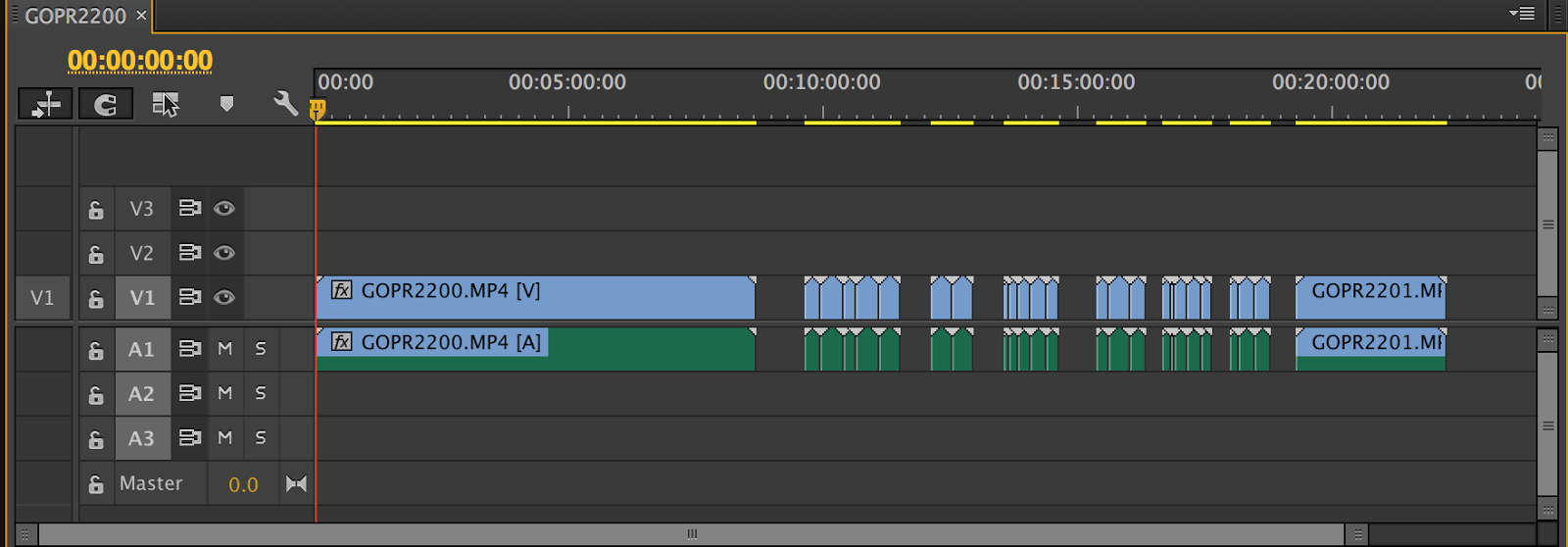
We would drag clips onto different sections of the timeline in a rough order, we were finding clips for the whole sequence and putting them on the timeline in places where we thought they would most likely go up we did end up using them, we didn't do this process in a periodical order from beginning to end as we knew that we might come across problems later on, for example we could become to focused on the very beginning of the opening sequence and make it too long which would then mean that we would have to cut some great shots later on.
This process took a long time, but eventually we sifted through all of the footage and put all of the shots that we thought were good onto the log timeline. We were then ready to make the real timeline. Although we didn't have to look through all 89 of the shots from the shoot day it was a very difficult task to create a decent picture cut that created tension without adding sound.
 After 2 or 3 hours of editing the picture cut we had created a rough version of what the opening sequence would look like, however it was almost 8 minutes in length which was obviously WAY too much for our opening sequence, so we had to do a lot of cutting to get the overall length of the sequence to the right length. This proved to be a very difficult job and forced us to have to cut some of the shots that we really liked, or at least make them shorter.
After 2 or 3 hours of editing the picture cut we had created a rough version of what the opening sequence would look like, however it was almost 8 minutes in length which was obviously WAY too much for our opening sequence, so we had to do a lot of cutting to get the overall length of the sequence to the right length. This proved to be a very difficult job and forced us to have to cut some of the shots that we really liked, or at least make them shorter.
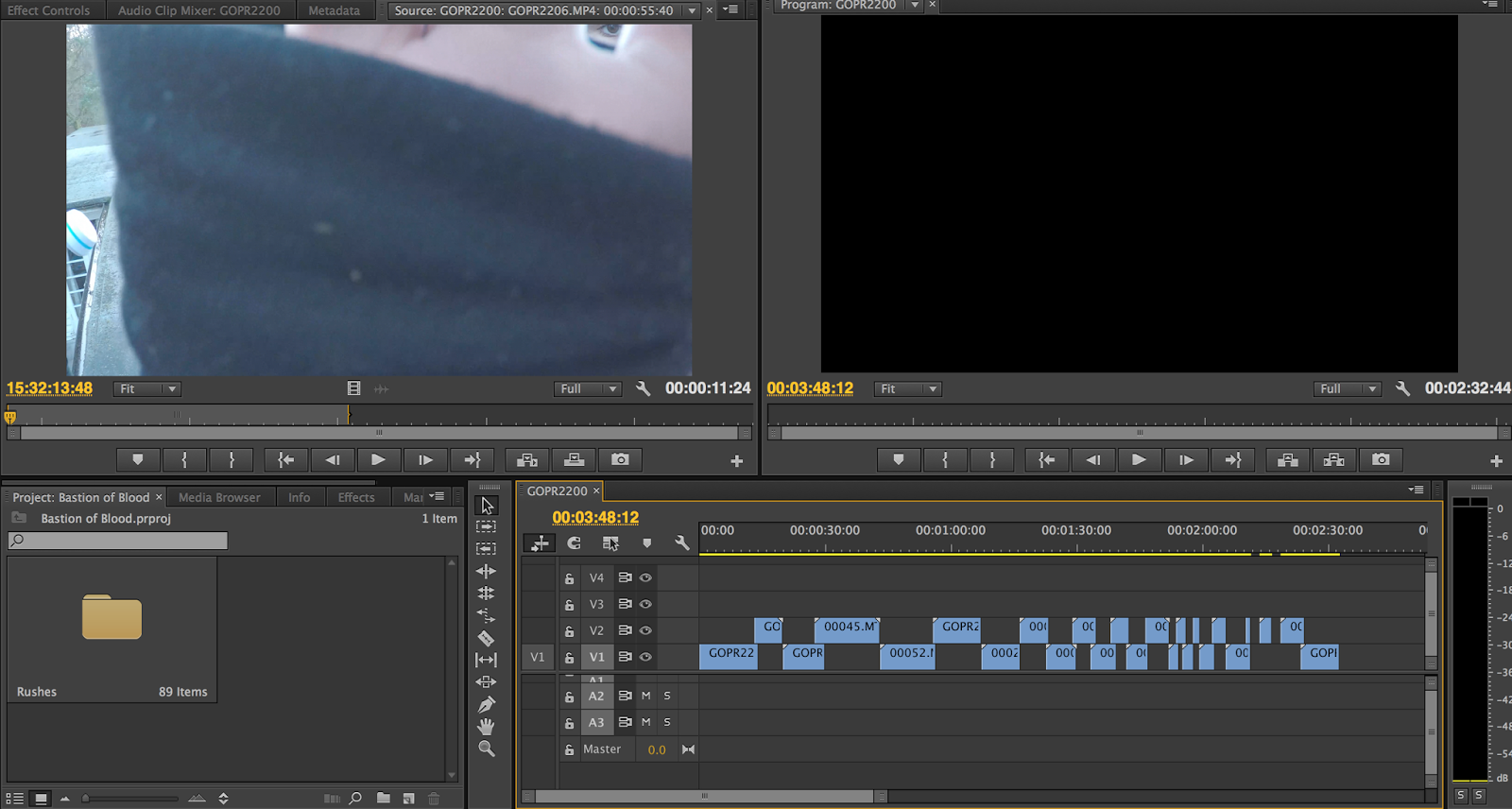 After a couple more hours we had created a picture cut that was 2 and a half minutes in length which was pretty much the smallest we could make the opening sequence without taking out one or two of the shots we really didn't want to take out. During this process we had strayed almost entirely from what our original plan for our thriller was, this was a combination of what we shot on the actual shoot day and also what we edited afterwards. We realised that actually there were much better ways to create tension in the thriller and we were only able to decide what we wanted once we saw what it looked like on screen and after we had seen what shots we had attained on the shoot day.
After a couple more hours we had created a picture cut that was 2 and a half minutes in length which was pretty much the smallest we could make the opening sequence without taking out one or two of the shots we really didn't want to take out. During this process we had strayed almost entirely from what our original plan for our thriller was, this was a combination of what we shot on the actual shoot day and also what we edited afterwards. We realised that actually there were much better ways to create tension in the thriller and we were only able to decide what we wanted once we saw what it looked like on screen and after we had seen what shots we had attained on the shoot day.
Despite using different shots than what we intended to and putting everything in a different order I am very satisfied that our picture cut has turned out as it has, and I'm sure that what we have now is better than what we had planned to create.
I found that continuity was a pain in my thriller asI had to make sure that objects and people weren't out of place and that there weren't any major errors in the opening sequence, this took me a while but not as long as I expected as we were fairly religious on the shoot day and were carful not to make too many errors.
However one error that we did encounter was a shot where our sniper is taking off his glove in preparation for setting up the rifle. We had to shoot a sequence on a different part of the roof of Peaslake house due to health and safety reasons and the area where we shot the close ups was visibly distinguishable from the area that mike sets up his rifle in a long shot filmed by the drone, one key difference was that there were railings on the edge of the platform where we filmed the close ups and there wasn't railings on the edge of the platform in the other area. In the shot above you can clearly see the railing in the background, so I looked up a way to zoom in on the clip without cropping it easily and efficiently. This was the process:

First I clicked on a video clip from the official timeline for the opening sequence, this opened the clip and all the settings and effects options for that individual clip, I then clicked on the effects tab which gave me three options: Motion, Opacity and time remapping, I had to open up motion to get what I needed.
Once I had opened motion it gave me a variety of settings I could change, I wanted to zoom into the clip using the scale tool, I adjusted the units to zoom in, but I wasn't in the right position on the screen to see the sniper taking off his glove.
To move the centre point to the glove I adjusted the units of positioning (up/down and left/right). I was then in the right position, but as I played the video the hand moved in and out of the frame as I was zoomed in so far.
To get around this problem I clicked on the little stop watch icon next to the units of positioning and scale, this creates a keyframe which is essentially a marker for the program to work off, every time I adjusted the settings afterwards throughout the clip the screen would automatically move to my new settings on each frame, as if I were panning around the shot. It looked natural and worked well so I was very happy with the final product. I used this handy tool on other shots to keep the subject in the centre of the frame. I had to use the motion effect on all of the shots filmed with the drone as the format of the shot was 2.7k as opposed to 1080p which the NX5 was filming at, if I didn't scale in the drone shots then a large boarder would have been created around the frame like in the first screenshot. (we decided not to use the shot of the glove being removed in the end!)
We then created two new bins within "Rushes" called "NX5" and "Drone" as we had two different cameras on the day, the drone and the Sony NX5, so creating two different bins for footage from each camera made the process of finding the clips we were looking for a lot easier than having all of the footage in one bin.
We then went through the long and relentless process of looking through all of our rushes and finding shots that we wanted to put in our opening sequence and dragged the clips from the rushes bin onto the "Log" timeline, which was effectively a rough outline of the actual timeline for the opening sequence.

We would drag clips onto different sections of the timeline in a rough order, we were finding clips for the whole sequence and putting them on the timeline in places where we thought they would most likely go up we did end up using them, we didn't do this process in a periodical order from beginning to end as we knew that we might come across problems later on, for example we could become to focused on the very beginning of the opening sequence and make it too long which would then mean that we would have to cut some great shots later on.
This process took a long time, but eventually we sifted through all of the footage and put all of the shots that we thought were good onto the log timeline. We were then ready to make the real timeline. Although we didn't have to look through all 89 of the shots from the shoot day it was a very difficult task to create a decent picture cut that created tension without adding sound.
 After 2 or 3 hours of editing the picture cut we had created a rough version of what the opening sequence would look like, however it was almost 8 minutes in length which was obviously WAY too much for our opening sequence, so we had to do a lot of cutting to get the overall length of the sequence to the right length. This proved to be a very difficult job and forced us to have to cut some of the shots that we really liked, or at least make them shorter.
After 2 or 3 hours of editing the picture cut we had created a rough version of what the opening sequence would look like, however it was almost 8 minutes in length which was obviously WAY too much for our opening sequence, so we had to do a lot of cutting to get the overall length of the sequence to the right length. This proved to be a very difficult job and forced us to have to cut some of the shots that we really liked, or at least make them shorter. After a couple more hours we had created a picture cut that was 2 and a half minutes in length which was pretty much the smallest we could make the opening sequence without taking out one or two of the shots we really didn't want to take out. During this process we had strayed almost entirely from what our original plan for our thriller was, this was a combination of what we shot on the actual shoot day and also what we edited afterwards. We realised that actually there were much better ways to create tension in the thriller and we were only able to decide what we wanted once we saw what it looked like on screen and after we had seen what shots we had attained on the shoot day.
After a couple more hours we had created a picture cut that was 2 and a half minutes in length which was pretty much the smallest we could make the opening sequence without taking out one or two of the shots we really didn't want to take out. During this process we had strayed almost entirely from what our original plan for our thriller was, this was a combination of what we shot on the actual shoot day and also what we edited afterwards. We realised that actually there were much better ways to create tension in the thriller and we were only able to decide what we wanted once we saw what it looked like on screen and after we had seen what shots we had attained on the shoot day.  |
| Our shot list |
Despite using different shots than what we intended to and putting everything in a different order I am very satisfied that our picture cut has turned out as it has, and I'm sure that what we have now is better than what we had planned to create.
I found that continuity was a pain in my thriller asI had to make sure that objects and people weren't out of place and that there weren't any major errors in the opening sequence, this took me a while but not as long as I expected as we were fairly religious on the shoot day and were carful not to make too many errors.
However one error that we did encounter was a shot where our sniper is taking off his glove in preparation for setting up the rifle. We had to shoot a sequence on a different part of the roof of Peaslake house due to health and safety reasons and the area where we shot the close ups was visibly distinguishable from the area that mike sets up his rifle in a long shot filmed by the drone, one key difference was that there were railings on the edge of the platform where we filmed the close ups and there wasn't railings on the edge of the platform in the other area. In the shot above you can clearly see the railing in the background, so I looked up a way to zoom in on the clip without cropping it easily and efficiently. This was the process:

First I clicked on a video clip from the official timeline for the opening sequence, this opened the clip and all the settings and effects options for that individual clip, I then clicked on the effects tab which gave me three options: Motion, Opacity and time remapping, I had to open up motion to get what I needed.
Once I had opened motion it gave me a variety of settings I could change, I wanted to zoom into the clip using the scale tool, I adjusted the units to zoom in, but I wasn't in the right position on the screen to see the sniper taking off his glove.
To move the centre point to the glove I adjusted the units of positioning (up/down and left/right). I was then in the right position, but as I played the video the hand moved in and out of the frame as I was zoomed in so far.
To get around this problem I clicked on the little stop watch icon next to the units of positioning and scale, this creates a keyframe which is essentially a marker for the program to work off, every time I adjusted the settings afterwards throughout the clip the screen would automatically move to my new settings on each frame, as if I were panning around the shot. It looked natural and worked well so I was very happy with the final product. I used this handy tool on other shots to keep the subject in the centre of the frame. I had to use the motion effect on all of the shots filmed with the drone as the format of the shot was 2.7k as opposed to 1080p which the NX5 was filming at, if I didn't scale in the drone shots then a large boarder would have been created around the frame like in the first screenshot. (we decided not to use the shot of the glove being removed in the end!)
Subscribe to:
Posts (Atom)




















